

Not So Ordinary Communication: Cinematography in THE KING’S SPEECH
27 February 2011
No other industry composes time period dramas like the British and The King’s Speech is no exception. In many ways, the film is quintessential; the stunning costumes, moving score, brilliant performances, and majestic sets exemplify the high standard of a quality cinematic contribution. However, cinematography in The King’s Speech is far from typical, specifically the recurrent, exaggerated uses of lead room (or nose room).

From the onset, The King’s Speech employs the traditional, logical use of lead room: vacant space in a shot leading the audiences’ eyes to action not captured, or about to be captured. In fairness, the film also uses a great deal of head room , often usedwith lead room; however, the lead room is richer. Generally, the film embraces the space to the left and right of frames to convey meaning more strikingly than space at the top.
An example of standard lead room in the film is the opening sequence as Bertie ( Colin Firth ) prepares to deliver his speech at Wembley Stadium. As Bertie waits to ascend a flight of stairs toward the microphone he rests against a white brick wall. From the top of the stairs, a gentleman calls for Bertie to climb up. Cutting back to Bertie, the camera captures him still against the white wall looking up at the man calling; however, Bertie is at the bottom-right of the frame; the rest of the space is vacant. Although exaggerated, this is a common, easily understood use of lead room. The vacant space is symbolically filled with the action of the man calling for Bertie; the space leads the audience’s attention to action happening outside of, yet influencing the frame.
However, this is not the only use of lead room in the film. Another variation of the technique employed in The King’s Speech keeps the actors to the far left or right of the frame to capture something significant in the background, often times a door, hallway, or corridor. This use of lead room adds complexity, depth, and importance to the mise-en-scene/mise-en-shot.

A clear example of this second use of lead room is the scene in which Elizabeth ( Helena Bonham Carter ) first meets Lionel ( Geoffrey Rush ) in the waiting room of his office. During their conversation, the camera captures Elizabeth to the far right of the frame with an open door behind her at the far left. Although the door is several feet behind Elizabeth, she and the door balance each other in the frame. Elizabeth’s venture to the office is fueled by hope, and the open door behind her, which is just as much a presence in the scene as she is, greatly symbolizes that; Elizabeth is hopeful Lionel can cure her husband’s stammer and she is open, like the door, to his unconventional method.
What makes the meaning derived from this non-traditional use of lead room more profound is, during this scene, when the camera cuts to Lionel, he is also captured to the far left of the frame, yet there is no doorway, hallway, or corridor to the far right to balance the frame; however, Lionel is literally standing in a doorway. Elizabeth’s open door is her open-mindedness and willingness, and Lionel’s placement in a doorway symbolizes his preparedness and assurance in curing her husband’s stammer.
However, in the shots of Lionel, this unbalanced use of lead room lures audiences’ eyes to the vacant space, which, in this specific example, seems unnecessary and distracting. Because Lionel is to the far left of the frame, it is natural for the eye to look to the right; the eye is looking for the action or a balance. In this scene, and others, there is nothing for the eye to find. This is the film’s third and most unusual use of lead room.
This seemingly needless use of lead room is the most difficult to assimilate. Initially, it seems as though there are frames, like the one with Lionel, which minimize the actor to a portion of the frame and leave vast amounts of vacant space not capturing or leading the eye to anything of importance. Another strong example of this displaced use of lead room is when Bertie sits on the couch in front of Lionel’s abstract wall during his first session. Bertie is located in the bottom-left of the frame and the wall takes up the majority of the space. The lead room is to the right, but there is absolutely nothing and no one toward the right commanding attention. The frame almost feels, for a moment, an aesthetic style designed to make the film showy, or more visually striking, yet fails because it is meaningless.
Yet, the (un)lead room is far from meaningless; the unconventionality of these frames visually communicate the unconventionality of the entire narrative. What is more unconventional than a man who refuses to call a prince by his title and cares for royalty under the false premise that he is medically certified to perform these treatments? It is meaningful Lionel is off-centered in his frame; Lionel is unconventional. Furthermore, what is more unconventional than a prince in line for the throne of England, one of the most powerful empires in the world, who cannot verbally communicate? Additionally, said prince will take the throne on the eve of World War II ; a war generated by a man ( Adolf Hitler ) whose mastery of verbal communication influenced people to carry out horrific, inhumane acts of brutality. The imbalance in frames of The King’s Speech , employed through its own variation of lead room, supports the skewed disparity of the narrative.
There are so many things off-balance in the narrative it is only fitting the expression of the narrative visually account for the imbalance. Overall, The King’s Speech experiments spatially, specifically through standard and irregular uses of lead room to find the best cinematic language to communicate the story.

Share this:
~ by Kate Bellmore on 27/02/2011.
Posted in February's Reactions Tags: cinematography , Colin Firth , Danny Cohen , Geoffrey Rush , George VI of the United Kingdom , Helena Bonham Carter , lead (nose) room , The King's Speech , Tom Hooper
6 Responses to “Not So Ordinary Communication: Cinematography in THE KING’S SPEECH”
I think this is among the most significant info for me. And i am glad reading your article. But wanna remark on some general things, The web site style is great, the articles is really excellent : D. Good job, cheers
Videos.Saa.Co.uk said this on 31/03/2013 at 8:57 PM | Reply
I noted the very unusual framing early on. The director and DoP, I believe, were both very aware of breaking the ‘rule’ and use of lead/negative space. We frame things a particular way because of how the human visual system works. We want to see space in front of a person’s nose. The subject of interest ‘wants’ to be in the middle of the frame. We place our conversation partner in the center of our visual ‘frame’, so to speak.
By placing the characters such that there is no space in front of their nose, that subtly communicates the tension the characters are feeling. Bertie feels cramped because of his stammer. Lionel feels cramped by having to deal with royalty on a personal level. As was previously observed, when these personal conflicts resolved the framing became more traditional. Removing the tension the viewer had felt.
Anonymous said this on 24/08/2011 at 12:33 AM | Reply
I’ve wanted to write something similar to this on my webpage which has given me an idea. Cheers.
Sir Walter Lawn said this on 28/03/2011 at 10:24 AM | Reply
I found this site looking for someone discussing this topic and am glad to see it addressed. I don’t think the third use of lead space In the conversations between Lionel and ‘bertie’ were meant to communicate the unconventional nature of the characters. I think it was about accentuating the tension. It stood out to me from the beginning because it was untraditional. Text book technique is to keep one character on the left facing the character on the right with the other characters angle framing them in the first character’s lead space while giving lead space for the first characters framing. This is so that the conversation makes spatial sense for the audience. An “action line” is chosen and the audience stays on that side while the lead space is placed in the direction of the other actor. This film does the opposite. In lioness office the action line is placed facing the fireplace. Lionel on the left befits on the right. But Bertie is placed on the left of frame with right lead space and Lionel is framed to the right with left lead space. It is the opposite of convention true, but I think the result is more about how it gives the sense that they are encroaching into the other’s space. Both figuratively and visually. Although I’m not quite sure what the intent was, and I’m looking for discussion here. The framing did not change until they argue with each other about lionels credentials and Bertie yells at Lionel to get out of the chair and Lionel says he has a voice. From the moment Bertie recognizes Lionel as an equal despite his social stature, the framing becomes traditional. Although the language of the camera was very complex and needs a shot by shot analysis. There were some moments where Bertie was centered in the chair and I believe when Bertie gives Lionel the shilling he owes him, that “two-shot” was pretty traditional.
The generous amount of head space I think was mean to make Bertie look like he was sinking. To accentuate his Internally timid small stature as opposed to how u would normally frame a prince. The opposite angle of bertie was always low so that the thing he fears speaking to is large and intimidating. We’re always looking up at it. Except for the microphone we look at dead on, but it was framed as large as possible, larger than the framing filling the whole shot. It is gigantic and domineering.
Overall the use of cinematographic language was very unconventional but it was also very intentional. What it was trying to say requires further analysis and discussion.
Markus said this on 21/03/2011 at 11:09 AM | Reply
I am impressed by the quality of information on this website. There are a lot of good resources here. I am sure I will visit this place again soon.
Todd Paola said this on 16/03/2011 at 12:06 AM | Reply
Not So Ordinary Communication: Cinematography in THE KING'S SPEECH ……
Here at World Spinner we are debating the same thing……
World Spinner said this on 27/02/2011 at 11:30 PM | Reply
Leave a comment Cancel reply
- About the Author
- Cast Your Vote: Reel Club’s Monthly Poll
- This Month’s Genre…
Email Subscription
Enter your email address to subscribe to this blog and receive notifications of new posts by email.
Email Address:
Sign me up!
Reel Club Stats...
- 945,301 takes
- H2Oooohhhhhh: The Motif of Water in WILLIAM SHAKESPEARE’S ROMEO + JULIET
- What’s Your Angle?: Dutch Angles in Spike Lee’s DO THE RIGHT THING
- Second Time is a Charm: Re-watching LINCOLN with Middle Schoolers
- Reflections: Mirrors in THE SHINING
- But Why Do We Love It?: Allegories, Justice, and Cinematic Refinement in THE SHAWSHANK REDEMPTION
- It’s Not Easy Being Green…But It’s Validating: Links and Metaphors in FRIED GREEN TOMATOES
- Picnic Being the Operative Word: Mrs. Appleyard and Sara in PICNIC AT HANGING ROCK
- Stepping on Symbols: Staircases and Symbolism in THE VIRGIN SUICIDES
- What’s in a Passage?: David Lean’s Interpretation of E. M. Forster’s A PASSAGE TO INDIA
- Think With Me: Dazzling and Distracting Cinematography in LES MISERABLES
Blog at WordPress.com.
- Already have a WordPress.com account? Log in now.
- Subscribe Subscribed
- Copy shortlink
- Report this content
- View post in Reader
- Manage subscriptions
- Collapse this bar
Every great movie must end, and so StudioDaily has ridden off into the sunset. We sincerely thank you, our loyal audience, for your unwavering support over the years.
You can still access a full archive of StudioDaily’s content here .
For news about the media business, please check out our sister brands Cablefax and Cynopsis .
StudioDaily will close its doors on Feb. 1, 2020. We have enjoyed covering the world of production and post from the equipment to the software to the people who make it all happen. We sincerely thank you, our loyal audience, for your unwavering support over the years.
Cinematographer Danny Cohen on The King's Speech
By Beth Marchant / February 17, 2011
How London's Low Winter Light, Wide Master Primes and Intimate Camera Work Let 35mm Reign Supreme

StudioDaily: The King’s Speech gives us the very intimate backstory of a very public memory but there are only a few grand, exterior locations. Most of the primary interior scenes are shot in one place-Lionel Logue’s basement office. How much was determined by budget and how much was a conscious creative choice?
Danny Cohen: It really was a combination of both. As a UK-based film it didn’t have a very big budget. It made sense for us to play to our strengths. We lucked out when we found the Portland Place location for Lionel Logue’s consulting room, which was a character in itself.
SD: Was there a lot of art direction going on at that location, particularly with the mottled wallpaper you see behind Colin Firth in so many shots? Our production designer, Eve Stewart, found the room and the ripped up wallpaper was there, and they just extended it so it covered a larger area of the wall to became a larger set. The logic was that I don’t think anybody would ever design something that looked like that. It just caught Tom’s imagination. It was a crazy location in that way, because it essentially was something that you wouldn’t have seen before, especially back in 1930s London. But it was a visual representation of what’s going on inside the head of Colin’s character. I’ve done a couple of films with Tom, including half of the John Adams series. He did a similar thing there, where he wanted authenticity that would make the human drama believable. In that case, it was about seeing the dirt under people’s fingernails; it was gritty and dirt was everywhere. On The King’s Speech , that location certainly helped give those scenes a rougher, warmer, more human edge.
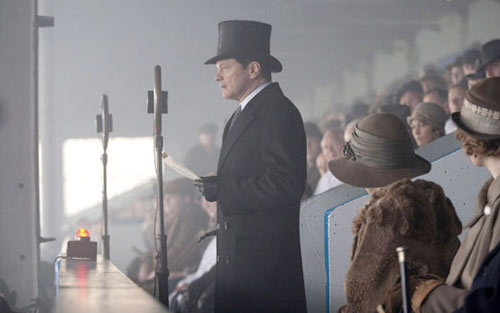
SD: You also got in very close to the actors’ faces in these scenes in Logue’s office, underscoring the immense pressure the king is under. That wallpaper, however, was still very much in focus. How did you frame these shots?
Basically, Tom’s starting point was that this is a historical drama. By and large, all British historical dramas have the same look: you have faces set against out-of-focus backgrounds. What Tom was trying to do was to open that up, so we used very-wide-angle [ARRI] Master Prime lenses and consequently could get much closer to the actors’ faces. We were literally putting cameras one or two feet away from each of their faces. A lot of interesting things happen when you put the camera so close to the actor. For one, you get nice big portraits, which you wouldn’t get with long lenses that are much farther away. But you also get so much more of the background that you instantly see where the person is. It’s not just out-of-focus mush; it contextualizes where the person is in the room, or in those larger scenes, for example in the Abbey before his coronation. That’s where the reality comes in-you’re putting them in a real location that’s an equally important part of the scene.
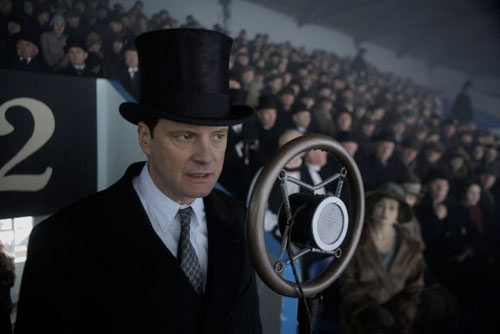
SD: How did the actors react to such close camera work?
There always was a degree of trust on set, and we never wanted to shoot them in an unflattering way. It came down to fitting the right lens with the right actor so that we could put the audience right in front of their face. The whole film is about language and not being able to speak, and Tom wanted that intimacy, to pull the audience into the story. It’s as if you can feel Colin’s breath on your face. It’s really nothing new in filmmaking, but it’s a slightly different take on the historical drama.
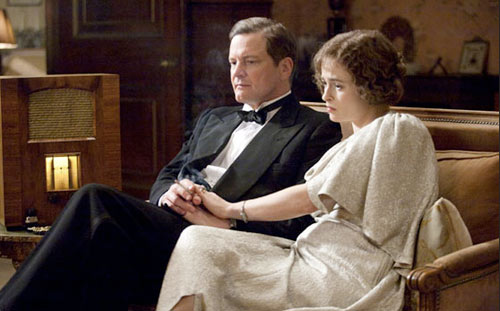
SD: You seemed to be shooting with very naturalistic light. What kind of lighting setup did you have for these interior scenes?
All the lights were outside of the room, and I kind of liked shooting that way, particularly because it also gave the actors a sense of added freedom. We weren’t pinning them down amongst a forest of lights; it was just really the camera and the operators with them in the room. You still had to be quite free with the camera, moving on Steadicam or on track or on a crane, all the normal processes you use in shooting a film. We felt that if we brought everything in closer, you can squeeze a lot more emotion out of the scene. But I think it always helps move the story along if you don’t over-complicate it with fancy crane moves. It makes it simpler if you’re not struggling to contain a scene within a shot because you’ve got something in your head that says it’s got to be a track move, or whatever.
SD: Did you shoot anything handheld?
Yeah, we did. The montage scene where Colin Firth is going through his vocal exercises, for example. We shot almost all of that handheld, save for one dolly shot, in 20 minutes at the end of the day. We had a time constraint (we were losing the afternoon light) so we had to figure out the quickest way to shoot it. We decided it was best to put the camera on the shoulder and shoot it really simply. The process of filmmaking invites so many ideas and strong points of view, but the reality on set is most decisions are made by necessity. Usually it’s a time constraint: the sun is going down or it’s starting to rain. At the end of the day you’ve just got to be flexible. You can’t impose your will on certain laws of nature. If the sun goes down at 4 o’clock, it goes down at 4 o’clock. We still had a whole rig of lights up in the skylight at Logue’s office, for example, and could control them, to a degree, to get the consistency we needed. But using natural light, combined with simulated light from logical natural sources, adds to the authenticity of the design of a film. When you try to light from the outside in, it just gives your talent so much more room to create. In Geoffrey Rush’s case, this worked in his favor. He played Lionel as a kind of live wire with lots of energy. It would have been a real shame if he couldn’t use that energy, and he wouldn’t have been able to if he was restricted by too much gear. And that’s just down on the ground. The beauty of the sets on this film was that even the interiors we shot in had fantastically high ceilings. The Portland Place location is a Georgian townhouse. The reason we didn’t shoot the film widescreen and we shot regular 1.85 aspect ratio was because we didn’t want to lose all that height. We wanted to exploit that frame to its best advantage.
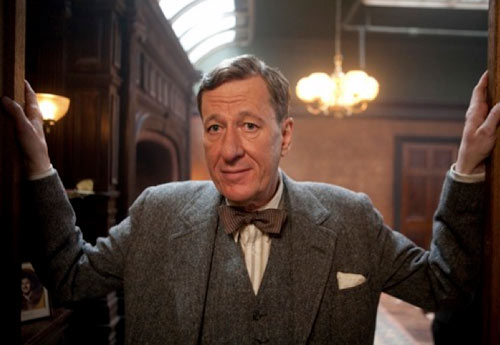
SD: What was in your lens kit?
We had a full range of Master Prime lenses. What’s great about Master Primes is they have an insane range of lenses, from 10, 14, 16, 18, 21, 25, 27, 33-a huge spread, which gives you a good choice. What’s peculiar is that even though the jump in the lens size is 3 millimeters, just by having that degree of choice, it can change the complete angle of view and how the face films. That range also meant that there was always the right lens for the right scene. You always go through a bunch of lenses first when setting up a scene to work out what the camera is doing in relation to the actor. Because of the range, we knew there would always be a lens that would let us film exactly what we wanted.
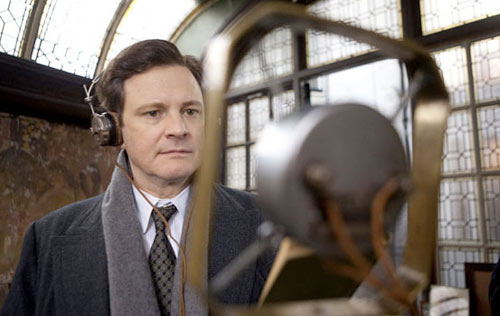
SD: There are a few striking long shots in the film-the opening scene at Wembley Stadium, inside Westminster Abbey and the pivotal scene in Regent’s Park. How did you shoot those scenes in contrast?
We shot most of the park scene on Steadicam because it was walking and talking. And with the Steadicam, we typically used a 21, 25 or 27mm lens.
SD: What was the most difficult scene to shoot?
The time constraints imposed by the time of year when we shot this film was probably the most challenging aspect of it, not any one scene. We shot during the winter in London, so we knew it would be getting dark every day at 4 or half past 4 o’clock in the afternoon. Unless we were in the studio, where we could control the lights, we had to shoot everything with this in mind. On big-budget pictures where you can afford to shoot everything in a studio you always do, because there’s just so much more control. In reality, on a smaller budget film, where the bulk of the work is on location, you have to go with the flow a lot more.
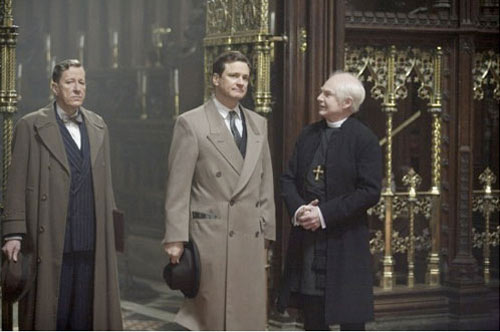
SD: There is a smoky haze pervading most of the outside scenes, characteristic of London at the time. How difficult was that to simulate and shoot?
It was pretty challenging during the Regent’s Park scene or Harley Street scenes to get the scale of that smoke, which essentially was smog, just right. We were quite lucky in Regent’s Park that it was quite a still, windless day. We had lots of smoke machines, but if there had been any wind, it would have all disappeared instantly. The light was absolutely perfect-the angle of the low winter sun through the smoke just created these long beautiful shadows. We really lucked out. The low light at the end of the year is a bit more atmospheric, which really worked for us. If you shoot in spring or summer, the light’s higher and harsher. The down side, however, was I think it was one of the coldest films I’ve ever worked on. It was a freezing winter last year in London. But again, that coldness in the exterior shots translates into the film you watch. On the outside, here was this cold, upper-class heir to the throne. But on the inside, there is a warmth and a humanity.
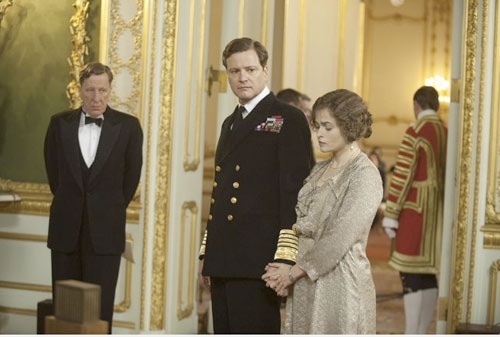
SD: Do you prefer to shoot on film? I’ve been really lucky that the bulk of my work in the past five years has been on film. I’m a bit spoiled really and not in the real world, I admit. I’ve shot some films on HD and shoot commercials on video, but the bigger projects, like the next Johnny English film with Rowan Atkinson I just finished, have been on film. I just think you have a lot more flexibility when you shoot on film. HD is good for certain things, but there’s a simplicity and texture you get when you shoot on film. Money plays a huge part in what you shoot on these days. Everybody approaches the question of what format to shoot in with a completely different point of view. As a cinematographer, I think you still get the best images from film. Plus, there’s a consistency about the process: you can literally turn the camera on and shoot. You’re also not losing control of the film into post-production. With the RED, you have to go have a cup of tea before the camera’s ready to go. It’s a computer you stick a lens on, and it’s not very ergonomically designed. If you do a lot of running around and handheld work, it doesn’t feel like a naturally balanced camera. I’ve shot on RED and on ARRI’s D21, and both projects looked really good. But you can’t put the D21 on your shoulder, either, because it weighs too much. The ALEXA, as a shrunk-down version of the D21, is much more practical, and because ARRI has this long history in the film industry, it’s much more ergonomically designed. You can just pop it on your shoulder and go. I’ve got a project coming up next month in which I’ll be shooting with the ALEXA. We could have easily decided to shoot The King’s Speech on HD because it’s so dialogue heavy with long, 10-minute takes. In an ideal world, you make that format choice for aesthetic reasons, because technology is no longer an obstacle. But it’s never an ideal world.
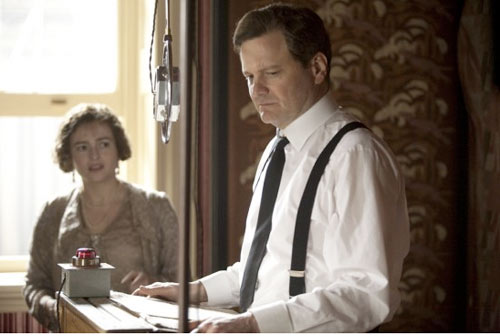
SD: Who among the other Academy Award nominees for Best Cinematography this year most inspires you?
I’m a massive fan of Roger Deakins. Most of the seminal films that influenced me he’s shot. The Big Lebowski is one of my favorite films. In the mid-1980s, Deakins shot a small-budget thriller called Defense of the Realm . There’s nothing fancy about it, but it always felt to me that each frame just helped to tell the story. I think that’s what he consistently does: it’s not flashy at all. And he knocks them out every year.
Crafts: Shooting
Sections: Business Creativity Technology
Topics: Feature Project/Case study
Crafts: Link 1 , Link 2 , Link 3
Sections: Link 1 , Link 2 , Link 3
Topics: Link 1 , Link 2 , Link 3
Did you enjoy this article? Sign up to receive the StudioDaily Fix eletter containing the latest stories, including news, videos, interviews, reviews and more.

Sony’s Vlogger-Friendly Camera Grip Has Bluetooth Control Built In
Jan 14, 2020
New product
Sony announced a new grip designed for a range of its Alpha cameras. The GP-VPT2BT Shooting Grip with Wireless...
Cinematographer Rodrigo Prieto, ASC, AMC, Gives The Irishman His All
Jan 10, 2020
For its critical success, awards buzz, and technical breakthroughs revolving around the unique use of brand-new digital de-aging techniques...

JVC Ships Connected Cam 500 Streaming Camcorders
Jan 8, 2020
It took some time, but JVC Professional Video said it is finally shipping its Connected Cam 500 series of...

Panasonic Sets Three 10-Bit 4K Camcorders for March Release
Jan 6, 2020
Panasonic announced a new series of run-and-gun 4K camcorders led by the AG-CX10, a pro camera with a 24x...

ASC Names Feature Film Award Nominees
The American Society of Cinematographers (ASC) announced the nominees for the Theatrical and Spotlight categories of the organization’s Outstanding...

Colorfront Adds Express Dailies Subscription Option for HDR Workflow on New Mac Pro
Jan 3, 2020
Colorfront said it is going after the Apple Mac Pro market with a new subscription model for its Colorfront...

Director Michael Shapiro Signs with Spears & Arrows
Dec 27, 2019
Director Michael Shapiro has joined Santa Monica commercial production company Spears & Arrows. In addition to commercial work for...

Review: Panasonic AG-CX350 4K Camcorder
Dec 18, 2019
It can’t shoot 4K raw to internal memory. You can’t mount a 50–1000mm zoom on it, and it doesn’t...

Essential Gear: Gifts for Filmmakers (Part 2)
Dec 17, 2019
As digital cameras settle into a familiar technological groove, crisp images with outstanding color rendition have become the rule...
Sponsored Content

Essential Gear: Gifts for Filmmakers (Part 1)
Dec 16, 2019
Lights, Cameras … Cinematographer Danny Cohen on ‘The King’s Speech’
- Show more sharing options
- Copy Link URL Copied!
For Lights, Camera … we ask a craftsperson to talk about a specific scene in his or her latest film. This week, cinematographer Danny Cohen writes about creating tension in “The King’s Speech” and the tricky lighting issues of filming in a recording booth.
In the climax of “The King’s Speech,” Colin Firth comes within 2 inches of a microphone to deliver a speech announcing the outbreak of war. Public speaking is something the monarch he plays has always dreaded due to a paralyzing speech impediment. But this is truly a moment to which a monarch is expected to rise.
The audience sees King George VI summoning up all his courage to successfully overcome his anxieties and fears to prove his mastery of oratory for this most important of all speeches.
The success of the film comes in part from always being with the king. Emotionally, the audience invests an enormous amount in the character, and that empathy is subtly pushed along by using interesting camera angles. Wide lenses were used very close to the actors’ faces to really get under their skin, camera movement and lighting makes it compelling and keeps the viewer engaged with the anxious monarch.
Filming this end sequence in Lancaster House was a little tricky on a practical level, with the restrictions of filming on location in a historic building undergoing restoration (the entire exterior was covered in scaffolding).
We had to have a plan that would allow light through the windows but not glimpse the scaffolding or the 30 lights we had placed on the scaffolding the entire length of the building. We rigged 300 meters [328 yards] of off-white Egyptian cotton to the windows so as to render the lamps invisible but which still gave the feel of natural light coming through the windows. Lighting through the windows like this gave us a lot of flexibility and unimpeded views of the long corridors. It also gave us a full day’s shooting in the middle of winter, when you lose daylight at about 4:30 in the afternoon!
The recording booth was re-created as a set to allow us the ability to shoot a lot of angles that would have been impossible in the real location.
Hopefully, there is nothing that interrupts the move from Lancaster House to a set and then back again.
More to Read

Review: Father and son go cross-country in ‘Ezra,’ an autism-themed road movie made with sincerity
May 30, 2024
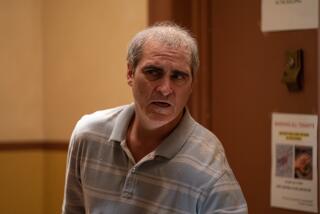
‘Beau Is Afraid’ explained: A disturbingly in-depth analysis of Ari Aster’s guilt trip to hell
April 19, 2023

Someone asked Jennifer Lopez about those Ben Affleck divorce rumors. It got awkward fast
May 23, 2024
Only good movies
Get the Indie Focus newsletter, Mark Olsen's weekly guide to the world of cinema.
You may occasionally receive promotional content from the Los Angeles Times.
More From the Los Angeles Times
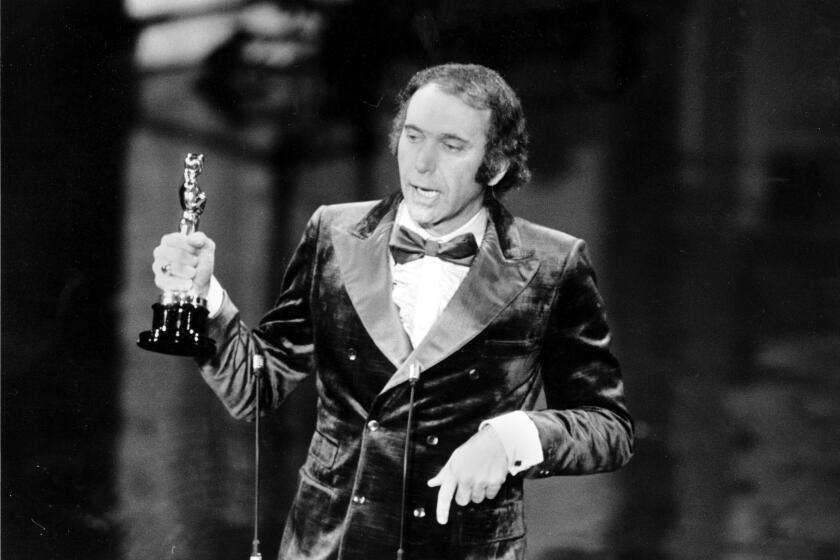
Albert S. Ruddy, Oscar-winning producer of ‘The Godfather’ and ‘Million Dollar Baby,’ dies at 94
May 28, 2024

Louis Gossett Jr., ‘An Officer and a Gentleman’ star who broke barriers in Hollywood, dies
March 29, 2024

At Vanity Fair’s post-Oscars party, Barry Keoghan was all in on Sabrina Carpenter
March 11, 2024

Entertainment & Arts
Photos: An exclusive look at the Oscars’ best backstage moments
- Recent changes
- Random page
- View source
- What links here
- Related changes
- Special pages
- Printable version
- Permanent link
- Page information
- Create account
How historically accurate is the movie The King's Speech
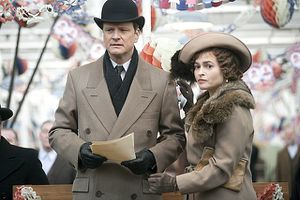
In 2010, The King’s Speech won the Oscar for Best Picture and grossed over $414 million worldwide. It was an unlikely box office champion because it was based on a true story about King George VI of Britain (1895-1952) and an Australian speech therapist Lionel Logue (1880-1953). It shows how Logue helped the king overcome a crippling stammer and how this helped him lead his country during World War II. The movie was directed by Tom Hooper and written by David Seidler.
Critics have widely praised the editing, cinematography, directing, and acting. The movie was able to express the main characters' inner life by the clever use of lighting and other cinematic techniques. Colin Firth won an Oscar for his portrayal of George IV/ The King’s Speech was produced by a British company, and it was shot mainly in London. Among the supporting cast was Helen Bonham-Carter, who played Queen Elizabeth, the wife of the king. The movie was nominated for 12 academy awards, and it won four awards, including one for Best Picture.
Before the movie began filming, the writer, Seidler, found Logue's journal and incorporated elements from the journal into the movie. However, despite this, the historical accuracy of the movie has been questioned and even widely criticized.
When does the King's Speech take place?
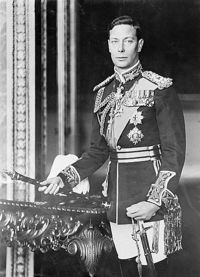
The King's Speech takes place mainly in the 1930s at a critical juncture for Britain and its Empire. The nation and its various dependencies had still not recovered from the ravages of World War or the Great Depression. Internationally, Hitler was in power in Germany, and many feared, correctly, that there would be another World War. [1] The rather bleak mood of the time is captured very well by the director. At this critical point in its history, the British Royal Family faced its crisis.
After George V's death, he was succeeded by his eldest son, who became Edward VII in 1936. Edward VII's reign was both brief and controversial. Edward wanted to marry a divorced American, Wallis Simpson. Marrying a divorced was unacceptable to many in Britain at this time as the King was also head of the Church of England. Divorce was socially unacceptable, and the Anglican Bishops and others denounced the idea of the monarch marrying a divorced woman.
When Edward VII decided to marry Wallis Simpson, he was forced to abdicate his crown soon after his Coronation. This meant that his younger brother George or Bertie, as he was known, became king. [2] The depiction of these events in the movie has been fictionalized but is reasonably accurate.
However, there were some inaccuracies in the movie that troubled viewers. One of the scenes that caused the most controversy was when Sir Winston Churchill, the future leader of war-time Britain, supported the accession of George V. This scene misrepresented Churchill's view of Edward's abdication entirely. Churchill supported Edward VII (1894-1972) and believed that he should remain as king despite his marriage to Wallis Simpson. He was friendly with the abdicated king and remained a supporter. [3]
Unlike in the movie, Churchill did have grave doubts about the ability of George VI to carry out his Royal duties. He was not alone in the belief, and many others shared that view in the highest circles of the British government. Over time, he did come to accept the younger brother of Edward VII and came to respect him as an able monarch and leader . [4]
The King and his Stutter
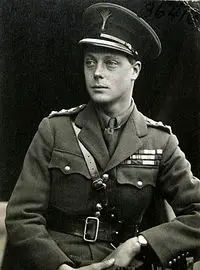
The movie's central theme is the difficulties faced by George VI because of his stutter and how Logue was able to help him overcome his speech defect. This depiction is historically accurate, and the future George VI had a serious speech impediment. In the movie, Firth's character is shown as having a terrible stammer and that when he became nervous or anxious, he was almost unable to communicate. His stammer made public speaking almost impossible for the monarch.
The movie shows that his speech impediment was a result of his insecurity and shyness. [5] This was very much the case, and George VI did have a terrible stutter from childhood. The King’s Speech accurately shows the real problems caused by the future George VI and the entire Royal Family. In one scene at the opening of an exhibition celebrating the British Empire, George struggles with a speech and becomes visibly upset. The movie shows many senior officials and members of the Royal Family becoming gravely concerned about this. In the 1930a, when the movie is set, for the first-time, Royalty members were expected to speak in public and be effective communicators because of the growing importance of the mass media. [6]
The inability of George VI to publicly speak clearly was a real problem, and it was feared that it could damage the Royal Family and even undermine confidence in the government of the British Empire. The movie does somewhat exaggerate the importance of the king’s stutter, but it was a significant issue for the Royal Family.
When did Lionel Logue begin treating George VI?
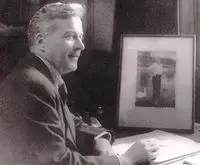
Perhaps the biggest inaccuracy in the movie is that Logue was, in reality, able to help the King to overcome his stammer before the abdication crisis and his coronation rather than after these events. He first began to treat the second son of George V in the 1920s and continued to do so for many years. The movie shows that the treatment took place in the 1930s, and this was no doubt done for dramatic effect, but this is not strictly correct.
Cooper’s movie relates how George had been seeking help all his life for his stammer, and he tried every technique and treatment available for the time, which is true. The 2010 motion picture does really capture the sense of desperation and anxiety that the future George VI had over his speech impediment. He is shown as going in desperation to the Australian Logue, and this is also correct. The therapist is shown as using innovative techniques to help George overcome his stammer, which is right. The Australian was an early pioneer in speech and language therapy, and he was an innovator. [7] The film shows Rush trying to instill more confidence in the Royal. He adopts several strategies, but none are shown to work.
How did Logue treat George VI's speech impediment?
Eventually, he provokes the king, and in his anger, he can speak stutter-free. In reality, the speech and language therapist gave the monarch a series of daily vocal exercises, such as tongue twisters, that were designed to help him to relax. This helped the future king to relax, and this was key to the improvements in his speech. The motion picture does show that the treatment was not a total success, and the king continued to have a very slight stammer. This was indeed the case. However, the improvement in the speech of George VI was remarkable, which is accurately shown in the 2010 movie. It shows George having grave doubts about Logue and his treatment when he hears that he is not formally qualified as a therapist.
In real life, this did not cause a crisis in the relationship between the British sovereign and the Australian therapist. It is correct that Logue was not formally qualified because there was no education system for language therapy when he was young. Instead, he was self-taught and had traveled the world, studying the ideas of respected speech therapists. The movie leaves the viewers in no doubt that the king and the Royal Family owed the Australian a great debt, and this was the case, and when George VI died, his widow, the Queen, wrote to the therapist to thank him for all he had done for her husband. [8]
What was the relationship between King George VI and Lionel Logue?

The movie shows that the two men began to become real friends over time, despite their differences. This was the case, and it appears that both men liked each other and even enjoyed each other’s company. The relationship between the British king and the Australian is very realistically shown, and they remained friends until the early death of George VI. The movie shows that Logue was present when George made important Radio broadcasts to the British Public. This was the case, but Logue continued to coach the king to speak in public for many years.
In the movie, Logue is shown when George VI pronounced that Britain was at war with Germany in September 1939 during a radio address to the nation. This is not correct, but the Australian did provide the king with notes on things where he should pause and breathe, and these were a real help in the most important speech the monarch ever made. Logue continued to coach the king for many years until about 1944.
The therapist is shown as being very much at ease in the King's presence and treating him like any other client. This was not the case. Despite their genuine friendship, Logue would have been expected to have been somewhat formal and respect the Royal Person of the King at all times. In real life, Logue was not as easy-going and familiar with George VI as portrayed in the historical drama. [9]
Was George VI accurately portrayed in the King's Speech?
Colin Firth’s performance was widely praised. The British actor won the Academy Award for Best Actor. While Firth's performance was widely acclaimed, there were some concerns about how accurately he portrayed the monarch. In the main, Firth did manage to capture George VI and his character in the feature film. The British actor did correctly show that the monarch was a timid and insecure man who felt that he was not equal to his Royal duties, and this was something that greatly distressed him. [10]
His stammer may have been a result of his sense of inadequacy, but this cannot be known, for certain. Firth does show that the monarch did grow in stature after he was crowned as King. It leaves the viewer in no doubt that by the end of the movie, Firth, who has largely overcome his stammer, could lead his country in its hour of greatest danger. [11]
This was the case, and the monarch became widely respected for his leadership and his calm dignity. However, the script tended to be overly sympathetic to George and avoided his character's rather unpleasant aspects. He was alleged to have both fits of anger and alleged acts of domestic violence. Those allegations have not been confirmed.
Helena Bonham Carter's performance was praised, and she does capture the personality of Queen Elizabeth (1900-2002). She was a very supportive wife and dedicated to her husband. She did not want him to become king because she feared what it would do to him. Her family, as shown in the feature film. [12] Geoffrey Rush played the character of the speech and language therapist Logue, and he presented him as a larger-than-life figure who was charismatic, and this was indeed the case. It is generally agreed that Rush really captured the personality of the acclaimed speech and language therapist.
How realistic is the King's Speech?
Overall, the movie is historically accurate. It shows the modern viewer the importance of the King's treatment for his speech impediment. This movie also captures the real sense of anxiety in Britain in the 1930s, and it broadly captures the historical context of the Coronation of George VI. The relationship between Logue and the monarch is also largely accurate. However, this is a movie, and the need to entertain means some inaccuracies, especially concerning details such as the king's treatment. However, when compared to other historical dramas, the movie is very realistic.
Further Reading
Bowen, C. (2002). Lionel Logue: Pioneer speech therapist 1880-1953. Retrieved from http://www.speech-language-therapy.com/index.php?option=com_content&view=article&id=53
Bradford, Sara. King George VI (London, Weidenfeld, and Nicolson, 1989).
Ziegler, Philip, King Edward VIII: The Official Biography ( London, Collins, 1990).
- ↑ Thorpe, A. Britain in the 1930s (London, Blackwell 1992), p 115
- ↑ Thorpe, p 118
- ↑ Rhodes James, Robert A spirit undaunted: The Political Role of George VI (London: Little, Brown & Co, 1998), p 118
- ↑ Logue, Mark; Conradi, Peter, The King's Speech: How One Man Saved the British Monarchy (New York: Sterling, 2010), p 13
- ↑ Logue, p 134
- ↑ Thorpe, p. 289
- ↑ Logue, p 145
- ↑ Logue, p 115
- ↑ Logue, p. 167
- ↑ Logue, p 189
- ↑ Logue, p 192
- ↑ Rhodes, p 201
- Historically Accurate
- World War Two History
- British History
- This page was last edited on 15 September 2021, at 05:21.
- Privacy policy
- About DailyHistory.org
- Disclaimers
- Mobile view

Danny Cohen on ‘The King’s Speech’
Cinematographer talks about his work on the drama
By Matt Hurwitz
Matt Hurwitz
- The Craft of the Kroffts: Sid & Marty’s Road to Hollywood’s Walk of Fame 4 years ago
- ‘2001: A Space Odyssey’ Influenced Generations of Filmmakers Like Nolan, Cameron 6 years ago
- The Beatles’ Christmas Records: A Feat of Fan Appreciation and Devotion 6 years ago
From his previous period film work (“John Adams”) with director Tom Hooper, cinematographer Danny Cohen knew what would be called for in “The King’s Speech” to keep the focus on the characters and not the 1930s time frame.
“Tom likes to give the actors lots of time to pull out fantastic performances, (plus) as much authenticity as you can manage,” he says. And for Cohen, that meant creating the light and image of a movie set “with as little of the carnage of a movie set as possible” around them.
Related Stories
‘sight’ and upcoming films demonstrate angel studios’ tricky leap of faith, 'dance moms' creator jeff collins launches new company, partners with sony pictures tv's nonfiction unit (exclusive).
Per his director’s charge, Cohen utilized a combination of wide-angle lenses, carefully planned close-ups and lighting that avoids drawing attention to itself and keeps the emphasis on King George VI (Colin Firth) and Lionel Logue (Geoffrey Rush), as the royal struggles with a debilitating stammer, with Logue’s help.
Popular on Variety
Cohen was inspired by the work of German-born photographer Bill Brandt. “He did a lot of very stark black-and-white photos that transcended the classes,” explains the d.p. “He shot with a forensics-type police camera with an amazingly wide lens,” an approach that easily found a home on the film.
“It allows you to really bring the actors close to the camera and get these fantastic close-ups,” Cohen explains. “And because you have a wide lens, you can then see a great deal of the background where they’re standing and the context they’re in.”
Cohen credits a consistent crew of skilled technicians with the success of the film’s cinematography, particularly his focus pullers, who carefully executed the many foreground-to-background focus adjustments. “Those shots help keep the audience engrossed in the film and with the characters, instead of jumping with cut after cut.”
The close shots allow the focus to remain on the King’s emotional challenges. “I wanted you to feel his breath on your face,” the d.p. says. “Because ultimately, it’s not as much about the history, but essentially about a guy who’s got a stammer (and) overcoming that issue.”
Oscar pedigree: “King’s Speech” reps Cohen’s first nom.
2010 awards to date: N/A
Camera and film stock: ARRI LTs and Fuji 500T Vivid and 160T Vivid. “The Vivid gives you a little bit more contrast, a slightly punchier image than their standard negative film. And if you shoot tungsten film in daylight, you get a cold image, perfect for the London winters we were depicting.”
Key scenes: “All the stuff inside Logue’s consulting room, which was shot in an old Georgian house in the middle of London. We lit it from outside the room, lighting through a skylight. It frees up the actors, and also lights the room in a vaguely naturalistic way. The warmth, then, comes mainly from the warmth that Geoffrey brings.”
More from Eye on the Oscar: The Director Jack Cardiff: Painter’s eye view The nominees: Danny Cohen | Jeff Cronenweth | Roger Deakins | Matthew Libatique | Wally Pfister
More from Variety
Ian gelder, ‘game of thrones’ actor who played kevan lannister, dies at 74, why tiktok blinked in its umg standoff, and what happens next, more from our brands, roblox users can earn more working for ikea than some real-life employees, this new ultra-premium reposado mezcal was aged in bourbon barrels, ncaa’s billion dollar settlement faces google book deal hurdles, the best loofahs and body scrubbers, according to dermatologists, blue bloods offshoot hinted at by paramount exec, verify it's you, please log in.
Jewish Journal
Connect. inform. inspire., ‘the king’s speech’ cinematographer, danny cohen [slide show].
- By Naomi Pfefferman
- Published February 24, 2011
Naomi Pfefferman
In a memorable scene from “The King’s Speech,” the future George VI (Colin Firth), a.k.a. Bertie, spews every expletive imaginable as a technique to overcome his severe stutter with the help of an unorthodox speech therapist, Lionel Logue (Geoffrey Rush). As f-words flow, a hand-held camera or Steadicam – a stabilizing device that attaches a camera to its operator—follows Firth as he gesticulates and sputters around Logue’s cavernous consulting room.
This cinematic waltz comes courtesy of the film’s director of photography, Danny Cohen, BSC, an Oscar nominee for best cinematographer who previously worked with “King’s Speech” director Tom Hooper on the HBO mini-series “John Adams.” “Instead of the camera being right in Colin’s face, it made sense to back away, so you can really see his body in motion,” Cohen said of the mobile camera work. “Therefore Colin had more space to be physical, and the freedom to go anywhere in that room and do anything he wanted to do.”
“The scene is funny because it’s shocking,” Cohen, 47, added from his London home. “I think at heart everyone is a child, so when you see a grownup swear, especially the future king of England, it’s very funny. What was even funnier is that there were swear words they [axed from] the final cut that were even more obscene. The character is reveling in the fact that he’s finding his voice, literally and metaphorically, but he’s also mischievous and having a laugh. That’s the balance we were going for in the film in general: to tell a serious story that also has a lot of humor.”
Just as he did on the “Adams” shoot, Cohen used hard light, rather than the softer hues often associated with period dramas, to make the World War II-era saga appear grittier and more contemporary. “Tom wanted a take on a historical drama that wasn’t standard fare,” Cohen said. “If you make things appear real rather than pretty, the film becomes more intelligible to a modern audience. You want to see the grime on the street and underneath people’s fingernails.” The cold light in the film warms up somewhat as the relationship warms between Logue and his excruciatingly uncomfortable patient.
“Cinematography can push the narrative forward, so anything you can do that makes the audience understand as much as possible as quickly as possible, helps tell the story in a more succinct and visceral way.”
The king’s anxiety is depicted via a range of visual language: faces pressed up against the side of a frame, for example; heads placed on the wrong side of the screen than viewers might expect; and wide-angle lenses on a camera placed close Firth—at times just a foot away; literally, in his face.
“The wider the lens, and the closer you put it to an actor, distorts the face and makes the person look as if they feel more and more awkward,” Cohen said. “The line you draw is how distorted you want people to look. Any time Colin was giving a speech into a microphone, we shot on a 14mm or 21mm lens [the smaller the number, the wider the lens], which are not lenses that distort too massively. It was just enough to create that sense of the king’s discomfort.”
Cohen feels a personal connection to the story: His maternal grandparents were German Jews who fled the Third Reich in 1933 to London, where they listened to George VI’s passionate anti-Nazi speeches on the radio. The movie depicts George VI’s older brother, Edward VIII (Guy Pearce), who abdicates the throne to marry an American divorcee – as the Nazi sympathizer that he was. “We didn’t use anything specific to make him look like a designer ‘baddie,’” Cohen recalled, “but what was quite exciting about filming Guy Pearce is that physically he actually looks a lot like Edward, which is an amazing piece of casting. There’s that tightness in his face when he is onscreen.”
One scene in particular resonates for the Jewish cinematographer: “It’s the one in which the king and his family are watching a film of his coronation on a black-and-white projector—and then a clip of Hitler at a rally comes on,” he said. “One of George’s children asks, ‘What is [Hitler] saying,’” and the king replies, ‘I don’t know what he’s saying, but he’s saying it terribly well.’ That’s an incredibly powerful line, because Hitler is sort of the antithesis to Bertie’s character, who can’t say things very well. And there was fluency to whatever [evil things] Hitler might have said. The delivery was always better than how Bertie could deliver his speeches, so that was a quite interesting, complex contradiction.”
Did you enjoy this article?
You'll love our roundtable., editor's picks.

Israel and the Internet Wars – A Professional Social Media Review

The Invisible Student: A Tale of Homelessness at UCLA and USC

What Ever Happened to the LA Times?

Who Are the Jews On Joe Biden’s Cabinet?

You’re Not a Bad Jewish Mom If Your Kid Wants Santa Claus to Come to Your House

No Labels: The Group Fighting for the Political Center
Latest articles.
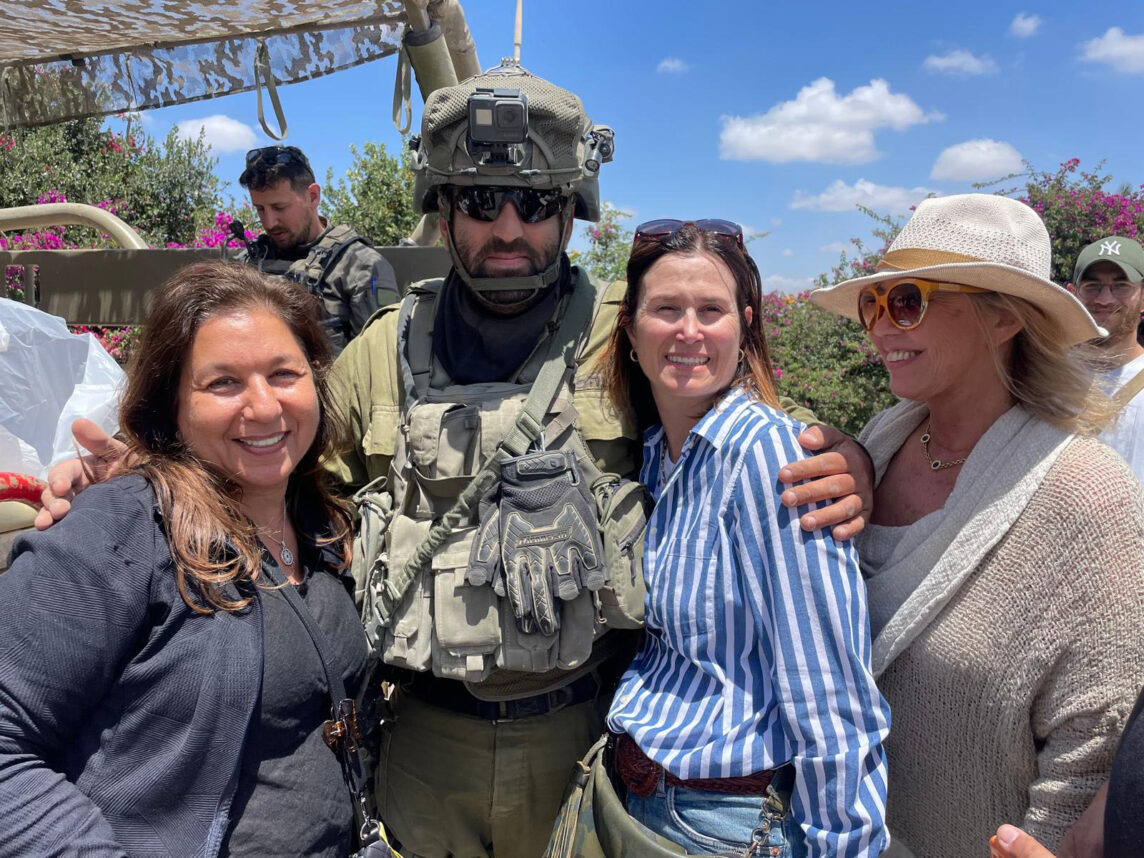
Giving Israel’s IDF soldiers a “Really” Big Hug
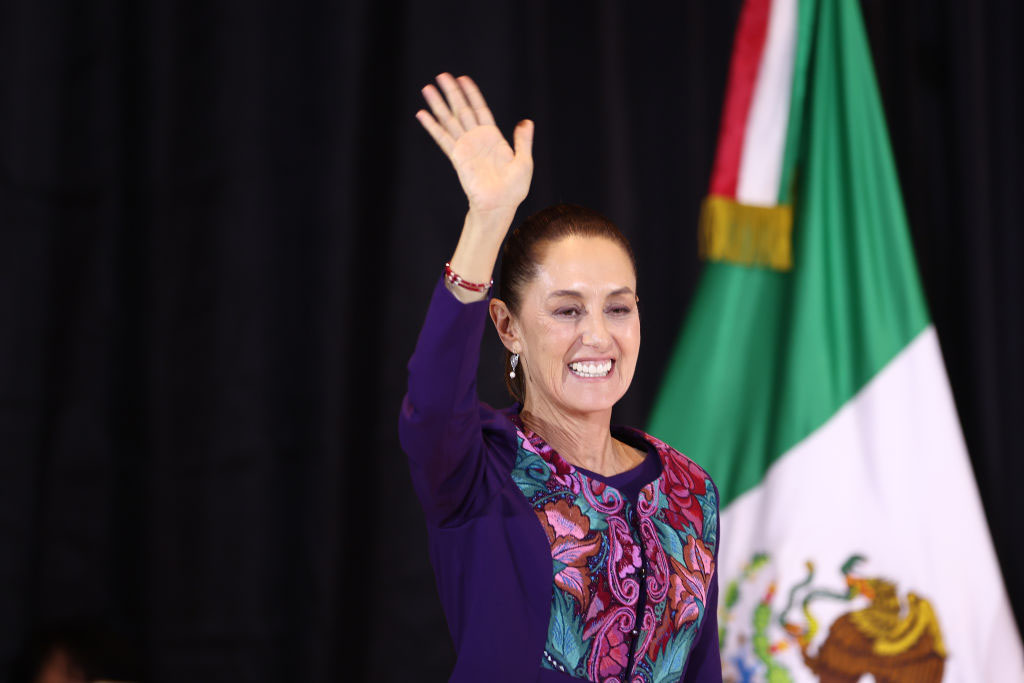
Quick Facts About Mexico’s Jewish President-elect, Claudia Sheinbaum

Students Object to UCI’s Decision to Not Rehire Hillel Rabbi to Teach Jewish Texts Course

A Record 12 Jewish Journal Writers Win 17 Awards at the 43rd Annual Simon Rockower Awards
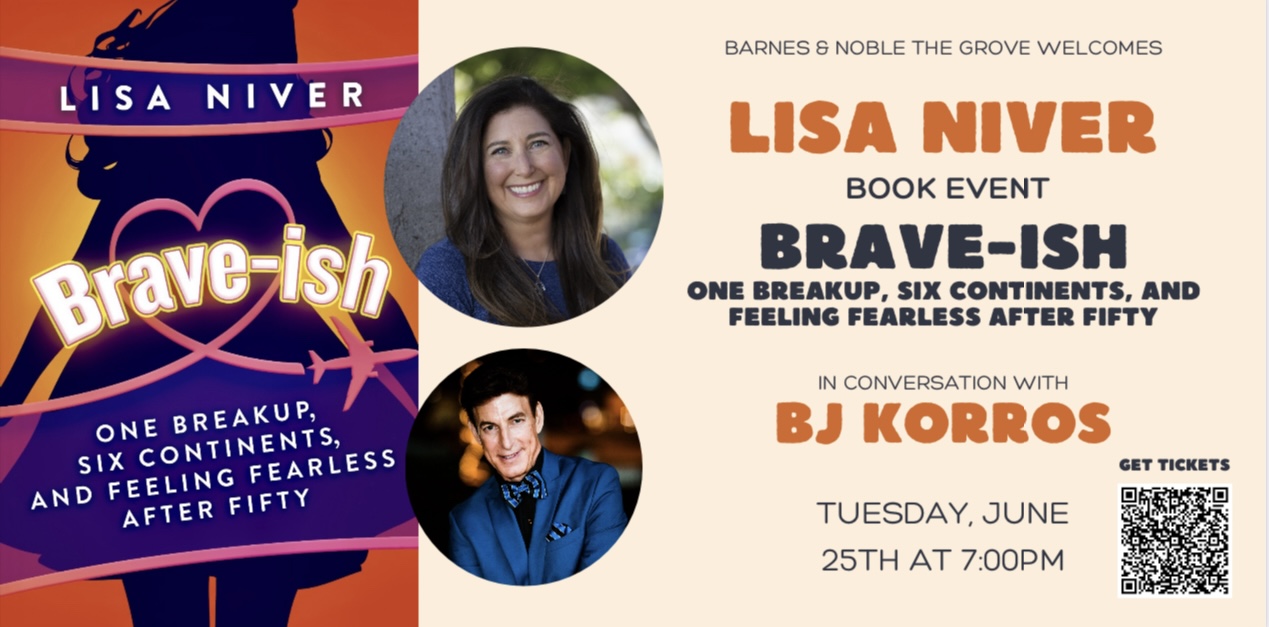
BRAVE-ish at Barnes & Noble at The Grove June 25, 2024
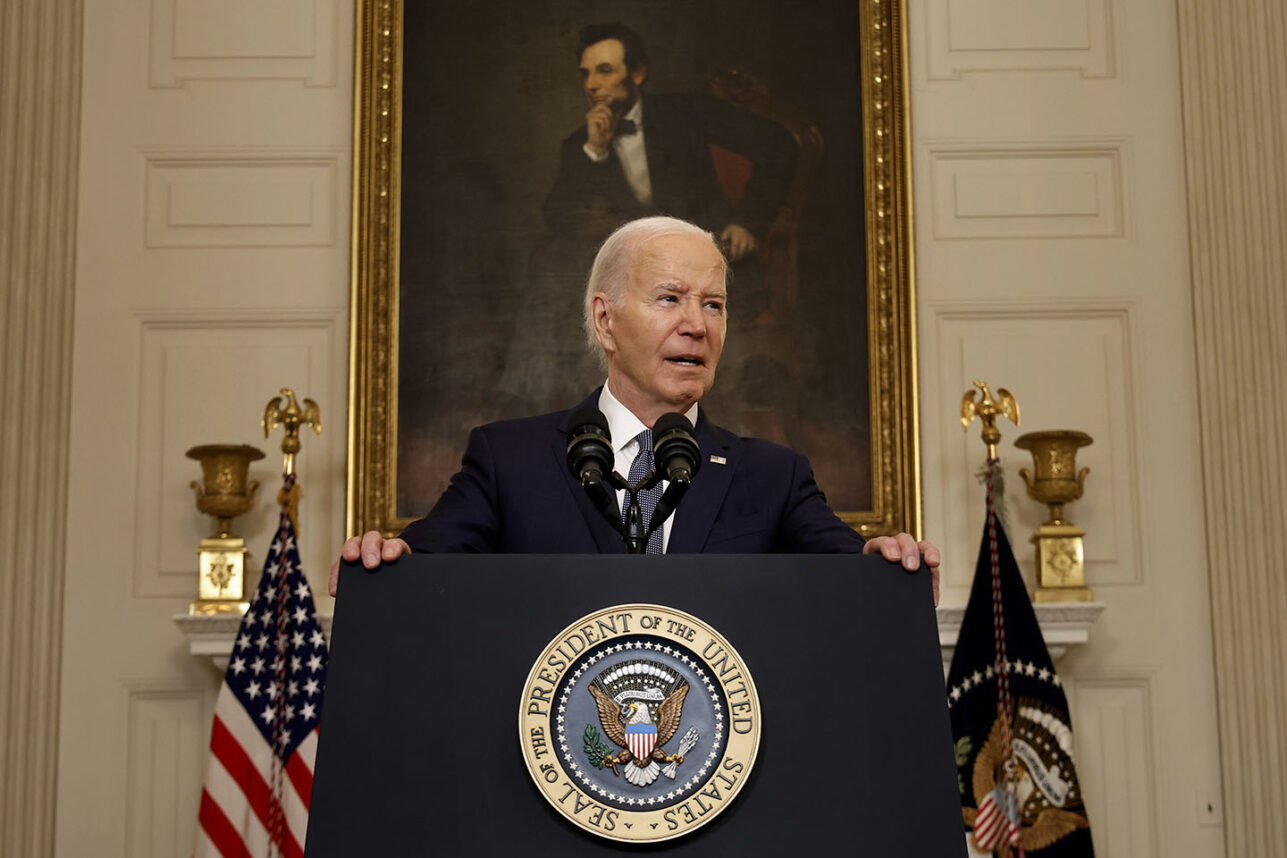
Cease-Stupid, Not Ceasefire
Say mazel tov with graduation cap gift jars, auschwitz cellist confronts rudolf höss’ son in documentary, “the commandant’s shadow”, vegetable delight: a tasty asparagus and pesto quiche, marooned for life: a review of ‘they were good germans once’.

The Failure of American Jewish Education
The American Jewish establishment has failed to adequately impart knowledge of Jewish history and the importance of Israel to the next generation.
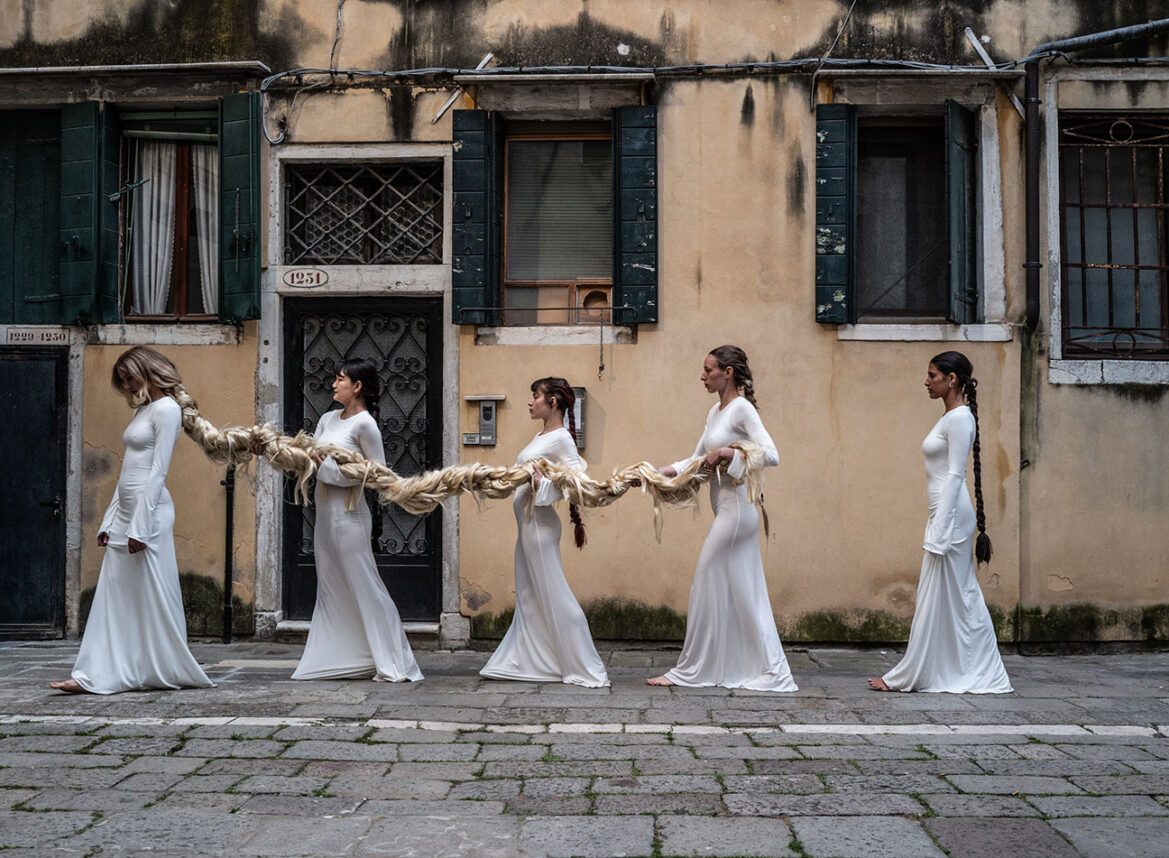
Shaping the “Contours of Otherness”
A new art exhibition at the Jewish Museum in Venice explores identity and migration in the contemporary era alongside the 2024 Venice Art Biennale.
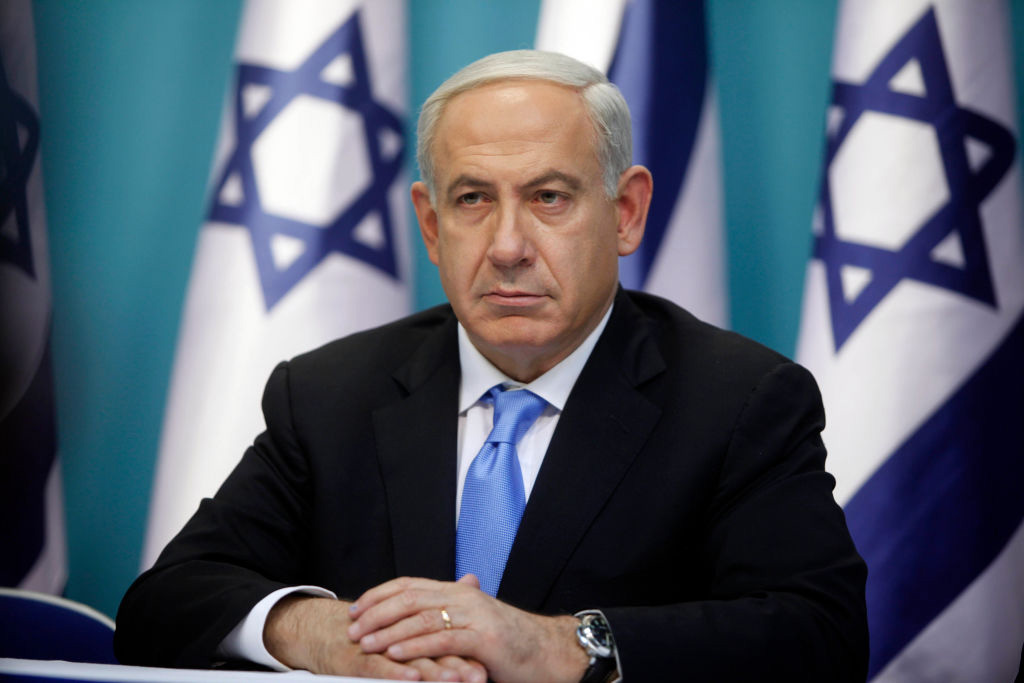
Facing Pressure From All Sides, Netanyahu Is Trapped By His Promises
If the Israeli prime minister backs the hostage-ceasefire deal announced on Friday by President Biden, the far-right parties in his coalition have threatened to bring down his government.
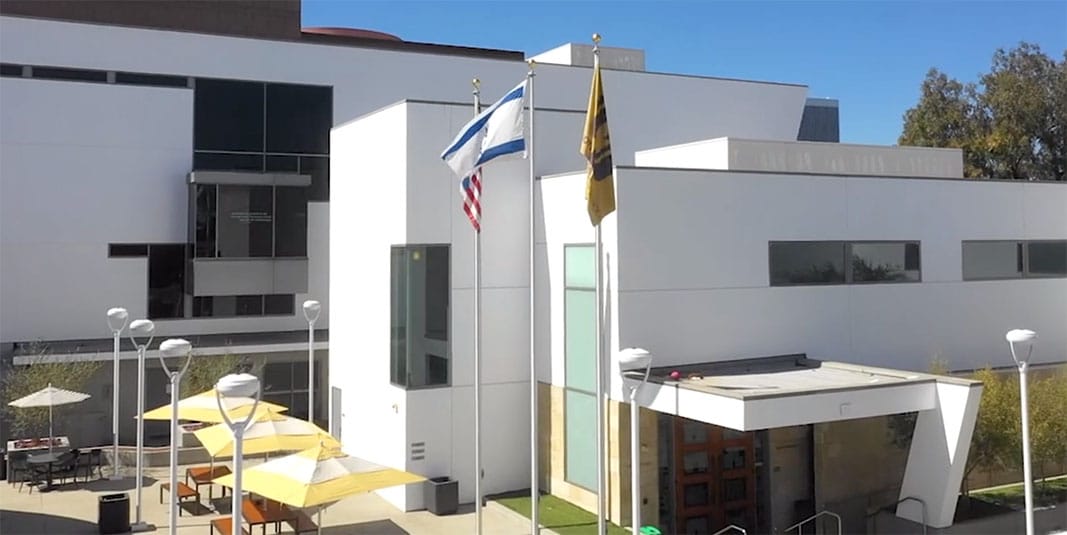
Orthodox High School Acknowledges “Inappropriate Relationship” Between Students, Teacher
The relationships allegedly took place between two male students and a female staff member at Yeshiva University of Los Angeles, which is more commonly known as YULA.
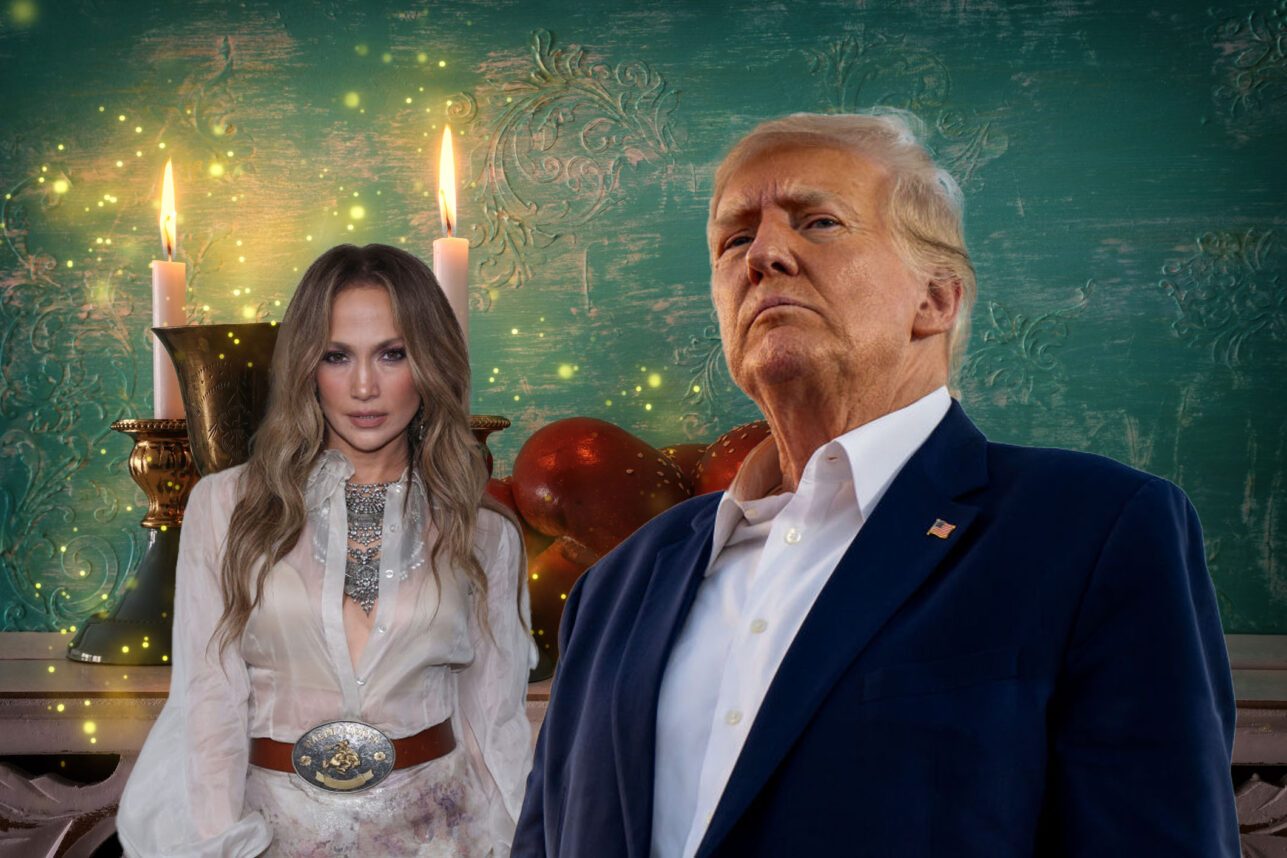
Trump is Guilty, JLo Cancels Tour, and I’m Getting Ready for Shabbat
Just as we click on the crummy news on our smart phones all day, on Shabbat we mentally click in search of blessings, and we continue that habit during the week.

Spielberg Says Antisemitism Is “No Longer Lurking, But Standing Proud” Like 1930s Germany

Young Actress Juju Brener on Her “Hocus Pocus 2” Role

Behind the Scenes of “Jeopardy!” with Mayim Bialik

Inbal Baum: Delicious Israel, Food Joy and Coconut Cream Malabi
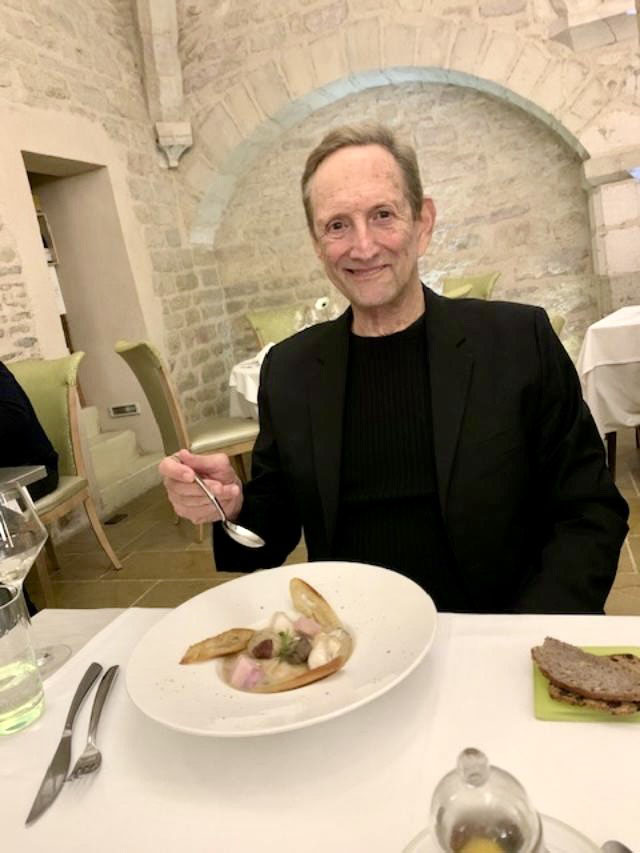
Murray Kalis: Advertising, Food and Mexican No-Matzo Matzo Brei
More news and opinions than at a shabbat dinner, right in your inbox..

Heightened reality
Danny cohen bsc / the king's speech.
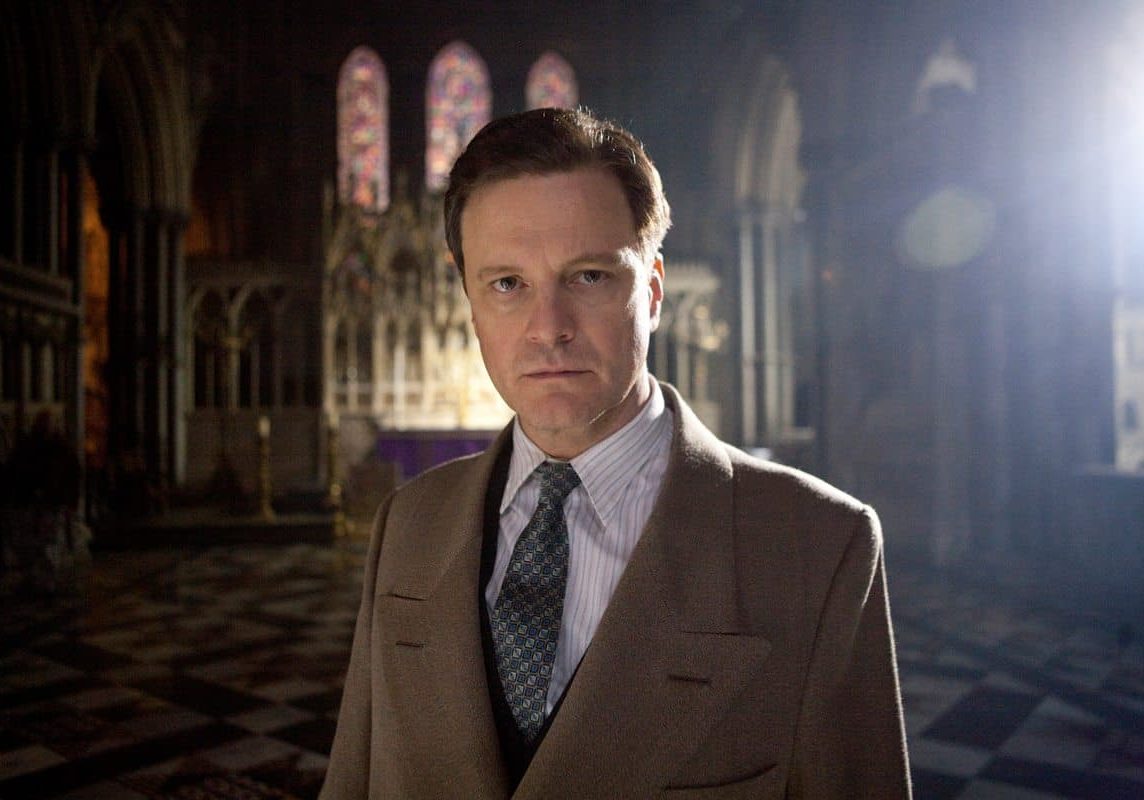
Period films are a standard entry on the filmographies of most cinematographers these days but few have spanned the centuries like Danny Cohen BSC. From Revolutionary America through the austere years of Britain in the 1940s and '50s to the present day, Cohen has worked on a wide range of styles and subjects, including historical biography, comedy and horror.
His latest is The King's Speech . Hotly tipped for Oscar success after winning in four categories at the British Independent Film Awards, including Best Film, it tells how the Duke of York reluctantly became King George VI after the abdication of his brother, Edward VIII, and overcame a severe stammer to deliver many broadcasts.
The King's Speech reunites Cohen with director Tom Hooper. The two previously worked together on the HBO mini-series John Adams (2008), about the revolutionary leader and second president of the USA, and Channel 4 film Longford (2006), telling the story of the eccentric peer's attempts to win parole for Moors Murderer Myra Hindley
Cohen says Hooper wants his period productions to be as authentic as possible, not just creating a resemblance to the era concerned but giving a sense of how life was at the time.
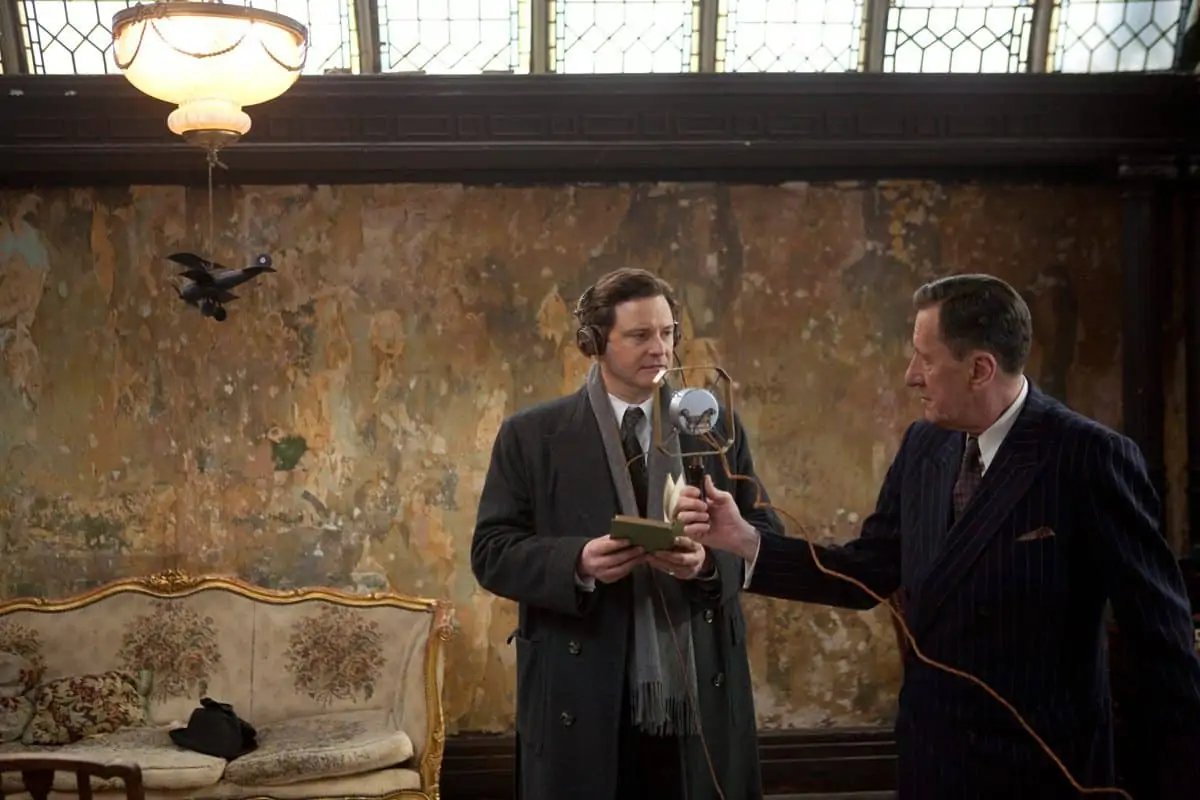
"Tom's not into making historical drama that is pristine and clean looking," he explains. "I shot the episodes of John Adams , produced in Hungary, and Tom was keen to show that America and England of the 18th century would have had crap everywhere - he's into giving a sense of reality."
Britain in 1936 was more sanitary, but Cohen and Hooper approached The King's Speech with the same mentality, attempting to convey the griminess of London back then, when choking pea-souper fogs were common.
"From a cinematographer's point of view I want to give texture and depth to a shot," Cohen says, " so there would be soot on the walls and layers of dirt. If you do things in shorthand you don't go to those lengths, but we had a great production designer [Eve Stewart] and she and I worked together on the look."
Cohen used the BBC documentary series The Thirties In Colour and Bill Brandt's photography as references, but concedes that all these can give is an impression of the times: "They were good pointers, but you can't take them as gospel, particularly the films, because there is a degree of degradation on the images."
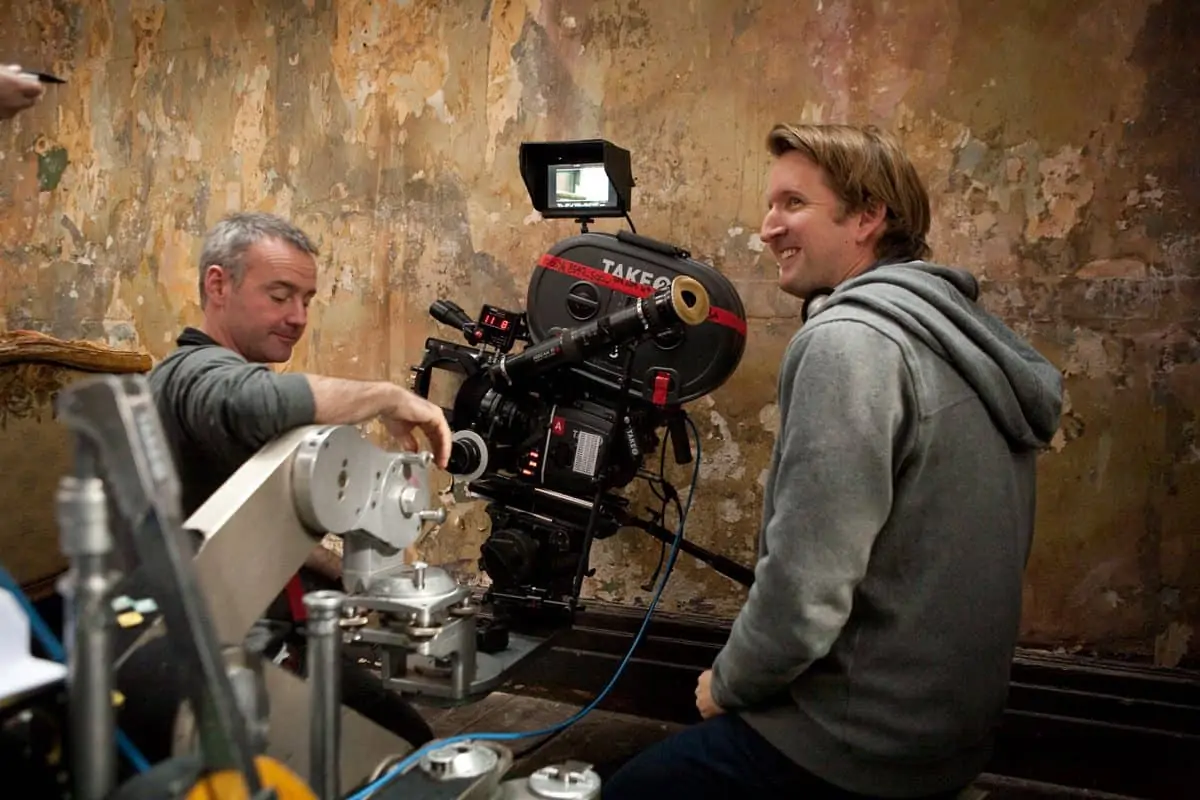
A big part of cinematography, Cohen says, is to get the shoot done and make it believable for the audience, who are watching any period piece from the perspective of today. The majority of The King's Speech was shot on locations late in 2009, with only a few studio set sequences.
Because of the time of year getting enough light for long enough was a constant problem, Despite starting at 8am every day. "We lit the interiors mostly through the windows to give a natural feel and make everything look as authentic as possible," Cohen says.
An example of how Cohen got the large amount of light he needed is the shoot at Lancaster House, which doubled for Buckingham Palace. At the time the building was encased in scaffolding, a fortunate coincidence because Cohen was able to arrange 20 4k HMI lights on the exterior platforms to shine in through the windows.
"We put cotton on the outside to give a consistent look of daylight for the whole day," he says. "I don't think we used any lights on the floor at all for that."
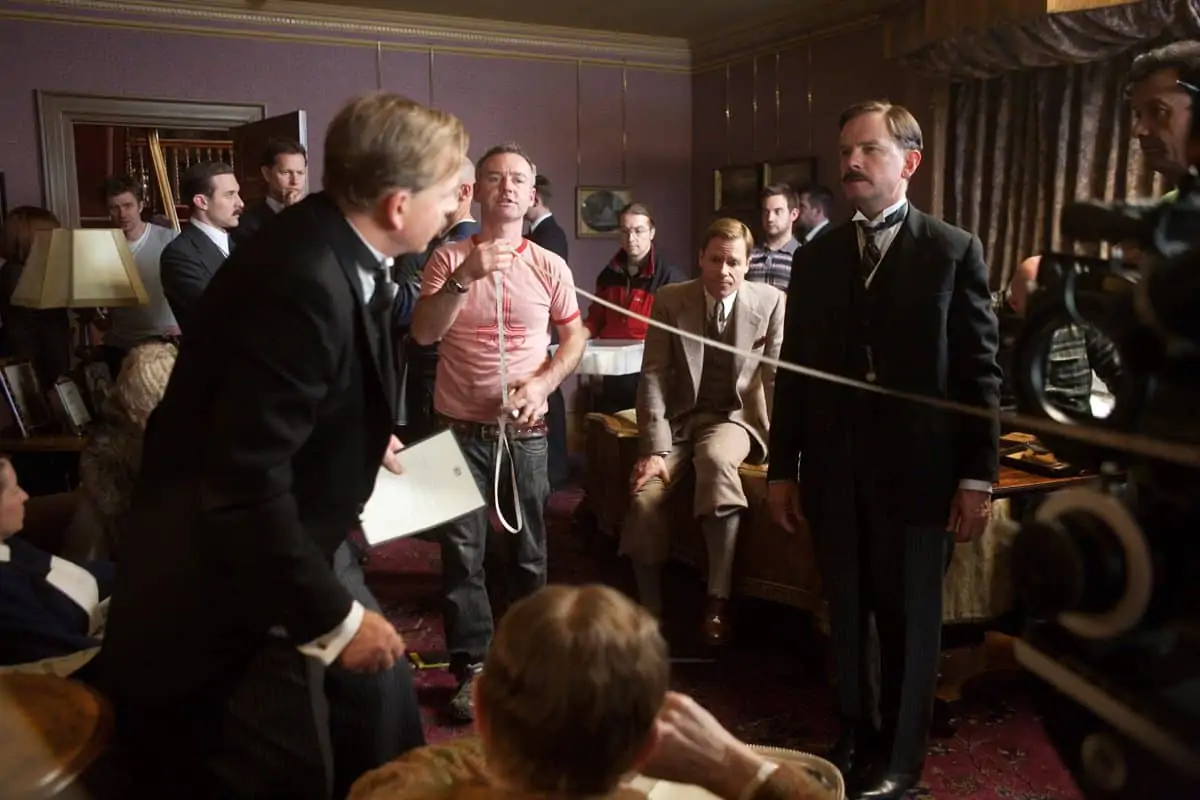
The visual style of The King's Speech has also been defined by the new 3-perf 35mm ETERNA Vivid 500 tungsten Fujifilm stock, which Cohen used in conjunction with Vivid 600T.
"It just offered something different over what I had been using before," he comments. "What I got was the right form of contrasty images - it also gives a slightly skewed feel to the action, a kind of heightened reality."
Cohen says the new stock, combined with the DI grade by Gareth Spensley at Molinare, helped produce the appearance he and Hooper had in mind, although the images did not need to be changed too much in post.
This was a two-camera shoot, using Arricam LTs with Arri Master Prime lenses. Cohen says using an A and B arrangement gives "a lot more coverage", particularly on a short schedule. "There is a balance you have to do, though," he admits. "You can't get the same specific angles for both cameras as you would with a single camera and you won't necessarily have the ideal light for the second, but this way of working gives more options for the editor."
Cohen used "all sorts of rigs", with sequences involving handheld cameras, Steadicams, cranes and dollies. "We weren't too prescriptive with that, we mixed it all up," he says. A sequence for which Cohen says it "made sense to use a Steadicam" was of George, played by Colin Firth, walking in Regents Park on a foggy afternoon with Lionel Logue, the speech therapist who helped him (Geoffrey Rush). "It gave the movement we needed and worked really nicely," Cohen explains.
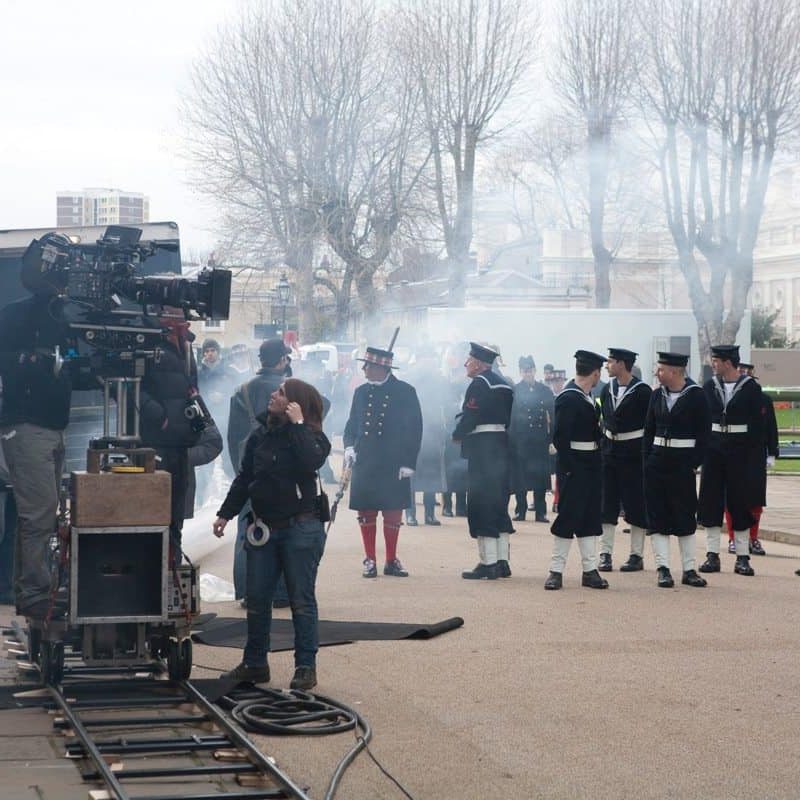
"From a cinematographer's point of view I want to give texture and depth to a shot, so there would be soot on the walls and layers of dirt. "
- danny cohen bsc.
Cohen has now made three films with Tom Hooper. Other directors he has worked with regularly are Stephen Poliakoff ( Joe's Palace and Capturing Mary , 2007), Dominic Savage ( Born Equal , 2006, and Dive , 2010) and Shane Meadows ( This Is England , 2006, and This is England '86 , 2010). The cinematographer sees forming regular working relationships with directors making sense, not just from a practical work perspective but also creatively: "You get to know how the other person ticks and they know your strengths and weaknesses. In both situations we're able to push each other and produce interesting stuff. If that doesn't happen you can just stagnate."
Danny Cohen's next film could be regarded as a shift from the sublime to the ridiculous: Johnny English Reborn , the sequel to the 2003 film about the eponymous bumbling secret agent, played by Rowan Atkinson. Cohen does not see this as a major change in pace. "Not all films are the same, but in a weird way there is a similarly because there are the same problems. We'll have big sets on this one and a bigger budget, but my job is still to make everything work effectively. The material is different, but it's exactly the same process."
Related Posts
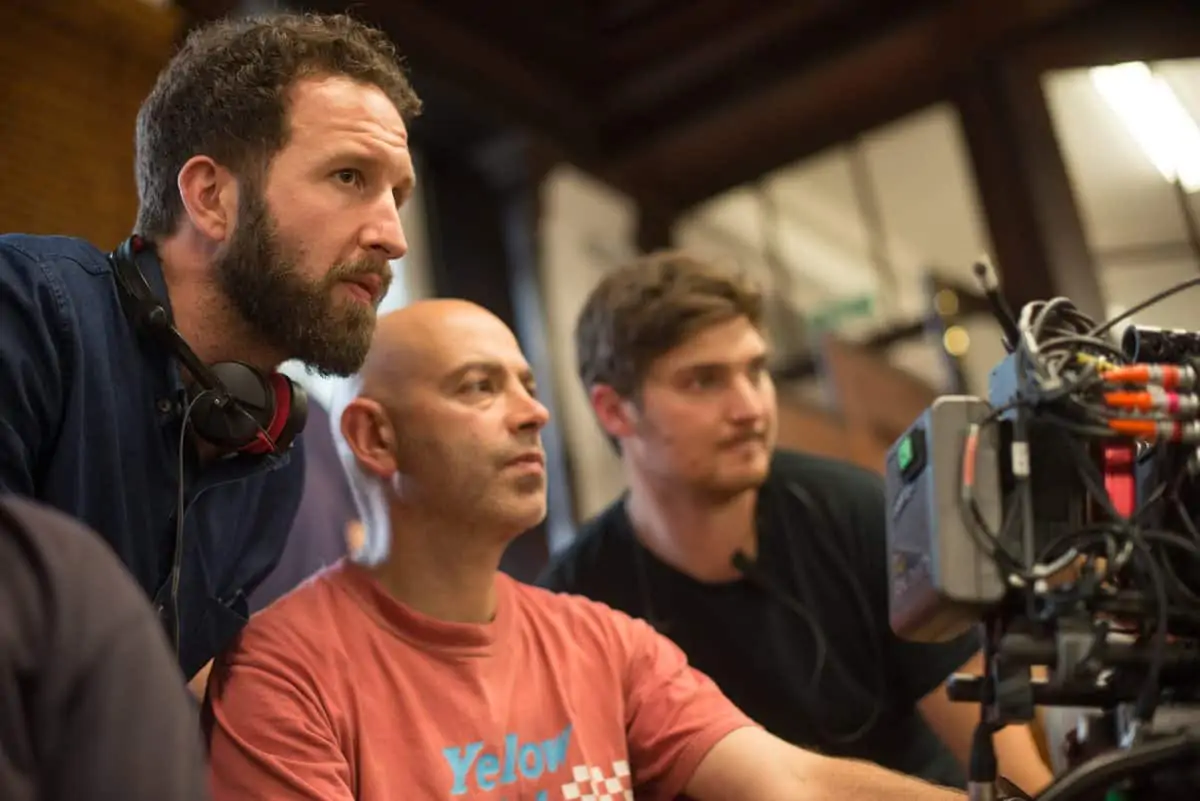
Latest Videos
You might have missed.

Jarin Blaschke / The Northman

Dan Laustsen ASC DFF / Nightmare Alley

Janusz Kamiński / West Side Story

Greig Fraser ASC ACS / The Batman

Masanobu Takayanagi / Swan Song

- Remember me Not recommended on shared computers
Forgot your password?
- Create Account
- In Production / Behind the Scenes

The King's Speech

By David Mullen ASC December 6, 2010 in In Production / Behind the Scenes
Recommended Posts
- Premium Member
David Mullen ASC
Lovely recreation of the look of early color stocks without hitting you over the head with it. Some shots looked like recreations of early Kodachrome and Agfa snapshots of 1930's England.
Link to comment
Share on other sites.

Andrew Wheeler
I thought there some bold framing choices as well that really helped visually communicate his difficulty speaking.
- 1 month later...

I agree with both of you, beautifully shot indeed.
One question though *potential spoiler* if the King spoke perfectly with the head phones on while the music played in his ears. Why didn't he just wear the headphones & listen to the music when he gave the speech over the radio in the end?
I mean, no members of the public or the press could see him in that booth.
Oh well, I guess they didn't think of that?

I was quite amazed at their use of wide angle lenses, and what they were able to do in small spaces.
Does anyone know how much of the film was shot on soundstage, versus on location? I hope this film gets a nom for Best Art Direction, because I sure had trouble figuring out which were sets...everything look marvelously lived in and didn't have that feel of open space outside of the frame that usually betrays a set with no ceiling.
Brian Dzyak
I agree with both of you, beautifully shot indeed. One question though *potential spoiler* if the King spoke perfectly with the head phones on while the music played in his ears. Why didn't he just wear the headphones & listen to the music when he gave the speech over the radio in the end? I mean, no members of the public or the press could see him in that booth. Oh well, I guess they didn't think of that? R,
I wondered the exact same thing during the movie, actually anticipating that that would happen. But it never did. Hmm.
I also wondered about the purpose of the odd framing choices. I'm still not sure what was meant to be achieved. :unsure:
Why, I was composing my shots like that in film school. My professors got on my case about it, but "the King's Speech" just goes to show I was ahead of my time! ;)

Bill Totolo
I was curious about the approach to lighting the close ups, wasn't really my cup of tea.
Seemed a bit harsh and a bit uncomplimentary, though I suppose that could be the point.

Phil Rhodes
Weird framing didn't work for me either. Just seemed to be a cry of "look at me, I'm being unconventional."
Brian Drysdale
I'd imagine it was because that would've only worked in a radio studio, when a king has to make public speeches at many venues. He couldn't wear headphones at the state opening of parliament for example. Not having yet seen the film, I'd assume the radio speech was the dramatic climax, but the future lies beyond that and having controlled his stammer he can fulfil his role during WW2 etc.
- 2 weeks later...
Jonathan Bowerbank
In regards to the framing, I'm sure it was just a choice between the director & DP to try and make conversations a bit more interesting to look at during the long sit down scenes. The performances were so great that conventional framing would have been fine, but I actually enjoyed the negative space in the frame and how it made me focus on the characters' faces.
John Sprung
Honestly, I didn't even notice the compositions. I was completely absorbed by the story and performances. But I come to this movie with a personal bias, having had the same thing, only nowhere nearly as severe. I probably blather away on this board as much as I do because it's easier than talking to you in person.

Believe it or not, the left-wing papers here can't bring themselves to give it unreserved good reviews because it's too kind to the Royal Family.
- 3 months later...
Austin Serr
I just rented and rewatched this and while I still love the directing, performances, art direction and actual quality/color palette chosen in the cinematography, the framing did nothing for me. I'm all for interesting (even distracting) framing, but only if it serves a purpose. It was obvious early on in the film that the reverse lead room and large amounts of empty space in most of the framing was supposed to signify Birdie's disconnection with the rest of the world due to his inability to comfortably communicate. The reverse lead room was most apparent when Birdie and Lionel first met, which I thought was a good way to show that they were at odds with each other. The problem is that as they became more and more comfortable with each other, the framing never changed. Any possible interesting significance that could've been associated with the framing then got thrown out the window and basically became useless and served only to be "different" and "unique". Also, the scene where the empty space in the frame was most apparent was just a random scene when Lionel was at home with his family. There was a frame where Lionel's head was in the extreme lower right-hand corner of the frame and the rest of the frame was taken up by a wall that has a repetitive pattern on it. It's a really interesting frame but it serves no purpose - why would the DP and director want to convey a feeling of emptiness, loneliness, and a feeling that the family is at odds with each other? It's made obvious in the film that Lionel has a good family life; there's no need to suggest otherwise.
It's an overall very solid film but the majority of the framing choices bothered me to no end.


Justin Hayward
the framing did nothing for me.
Im sure the filmmakers will take this to heart, toss out the Oscar, and drastically rethink their future endeavors ;)
Mike Goldstein
Also, it's Bertie, not Birdie.
(I hate for that to be my first post, but I felt a strange need to point that out.)
I’m sure the filmmakers will take this to heart, toss out the Oscar, and drastically rethink their future endeavors ;)
Haha yeah yeah. It was still a very good film and I commend them for taking a risk with the style in a film that's otherwise very conventional (don't mean that in a bad way). I'm still very intrigued to see what Hooper/Cohen do for their next project.
And yeah, thanks for pointing out "Bertie". That makes way more sense. I knew something was wrong with my spelling of it :P

Jason Reimer
I finally got a chance to see this, and loved it! I'm sure some will disagree, but I actually thought the asymmetric compositions served the story very well. To me, they underscored Bertie's discomfort with his surroundings, particularly his discomfort with people. The lighting was beautiful, the writing and the acting were great, and I just ate up those compositions. It was refreshing to see something that was different while at the same time clearly done with the intention of serving the story. If it made people a little ill at ease, then exactly! Welcome to his world. I thought it was brilliantly done.
To Mr. Sprung- stutter or not, I'm sure any conversation with you in person would be worth any working or aspiring cinematographer's time; you are definitely an asset to this forum! So thank you for your great input.
- 5 months later...
Brian Hulnick
Watched it 2 weeks ago and thought it was beautifully filmed. It really made you empathize with the King. His discomfort seemed so genuine. Great movie. Glad I finally decided to give it a shot.
Jerry Murrel
Good point. Hate to admit it, but I didn't even realize that till you pointed
it out. But there it is.
There really should be a "like" button for posts on this newsgroup! :)
-Jerry Murrel
CineVision AR
Little Rock
Daniel Jackson
Create an account or sign in to comment.
You need to be a member in order to leave a comment
Create an account
Sign up for a new account in our community. It's easy!
Already have an account? Sign in here.

PREMIUM MEMBERSHIP
ADVERTISING INFO
- Existing user? Sign In
- Marketplace
- Online Users
- Premium Membership
- All Activity
Camera Systems
- Bell & Howell
- Blackmagic Design
- Cinema Products
- Create New...
Movie Reviews
Tv/streaming, collections, great movies, chaz's journal, contributors, the rain in sp…sp...sp....

Now streaming on:
"The King's Speech" tells the story of a man compelled to speak to the world with a stammer. It must be painful enough for one who stammers to speak to another person. To face a radio microphone and know the British Empire is listening must be terrifying. At the time of the speech mentioned in this title, a quarter of the Earth's population was in the Empire, and of course much of North America, Europe, Africa and Asia would be listening — and with particular attention, Germany.
The king was George VI. The year was 1939. Britain was entering into war with Germany. His listeners required firmness, clarity and resolve, not stammers punctuated with tortured silences. This was a man who never wanted to be king. After the death of his father, the throne was to pass to his brother Edward. But Edward renounced the throne "in order to marry the woman I love," and the duty fell to Prince Albert, who had struggled with his speech from an early age.
In "The King's Speech," director Tom Hooper opens on Albert ( Colin Firth ), attempting to open the British Empire Exhibition in 1925. Before a crowded arena and a radio audience, he seizes up in agony in efforts to make the words come out right. His father, George V ( Michael Gambon ), has always considered "Bertie" superior to Edward ( Guy Pearce ), but mourns the introduction of radio and newsreels, which require a monarch to be seen and heard on public occasions.
At that 1925 speech, we see Bertie's wife, Elizabeth (Helena Bonham Carter), her face filled with sympathy. As it becomes clear that Edward's obsession with Wallis Simpson (Eve Best) is incurable, she realizes her Bertie may face more public humiliation. He sees various speech therapists, one of whom tries the old marbles-in-the-mouth routine first recommended by Demosthenes. Nothing works, and then she seeks out a failed Australian actor named Lionel Logue ( Geoffrey Rush ), who has set up a speech therapy practice.
Logue doesn't realize at first who is consulting him. And one of the subjects of the film is Logue's attitude toward royalty, which I suspect is not untypical of Australians; he suggests to Albert that they get on a first-name basis. Albert has been raised within the bell jar of the monarchy and objects to such treatment, not because he has an elevated opinion of himself but because, well, it just isn't done. But Logue realizes that if he is to become the king's therapist, he must first become his friend.
If the British monarchy is good for nothing else, it's superb at producing the subjects of films. "The King's Speech," rich in period detail and meticulous class distinctions, largely sidesteps the story that loomed over this whole period, Edward's startling decision to give up the crown to marry a woman who was already divorced three times. Indeed, the Duke and Duchess of Windsor (as they became) would occupy an inexplicable volume of attention for years, considering they had no significance after the Duke's abdication. The unsavory thing is that Wallis Simpson considered herself worthy of such a sacrifice from the man she allegedly loved. This film finds a more interesting story about better people; Americans, who aren't always expert on British royalty, may not necessarily realize that Albert and wife Elizabeth were the parents of Queen Elizabeth II. God knows what Edward might have fathered.
Director Tom Hooper makes an interesting decision with his sets and visuals. The movie is largely shot in interiors, and most of those spaces are long and narrow. That's unusual in historical dramas, which emphasize sweep and majesty and so on. Here we have long corridors, a deep and narrow master control room for the BBC, rooms that seem peculiarly oblong. I suspect he may be evoking the narrow, constricting walls of Albert's throat as he struggles to get words out.
The film largely involves the actors Colin Firth, formal and decent, and Geoffrey Rush, large and expansive, in psychological struggle. Helena Bonham Carter, who can be merciless (as in the "Harry Potter" films), is here filled with mercy, tact and love for her husband; this is the woman who became the much-loved Queen Mother of our lifetimes, dying in 2002 at 101. As the men have a struggle of wills, she tries to smooth things (and raise her girls Elizabeth and Margaret). And in the wider sphere, Hitler takes power, war comes closer, Mrs. Simpson wreaks havoc, and the dreaded day approaches when Bertie, as George VI, will have to speak to the world and declare war.
Hooper's handling of that fraught scene is masterful. Firth internalizes his tension and keeps the required stiff upper lip, but his staff and household are terrified on his behalf as he marches toward a microphone as if it is a guillotine. It is the one scene in the film that must work, and it does, and its emotional impact is surprisingly strong. At the end, what we have here is a superior historical drama and a powerful personal one. And two opposites who remain friends for the rest of their lives.
Note: The R rating refers to Logue's use of vulgarity. It is utterly inexplicable. This is an excellent film for teenagers.

Roger Ebert
Roger Ebert was the film critic of the Chicago Sun-Times from 1967 until his death in 2013. In 1975, he won the Pulitzer Prize for distinguished criticism.
Now playing

Evil Does Not Exist
Glenn kenny.

Turtles All the Way Down
Peyton robinson.

Matt Zoller Seitz

The Feeling That the Time for Doing Something Has Passed

The Contestant
Monica castillo.

In a Violent Nature
Clint worthington, film credits.

The King's Speech (2010)
Rated R for language
118 minutes
Directed by
- David Seidler
Latest blog posts

Animation Is Slow Motion: Pablo Berger on Robot Dreams

The Unloved, Part 126: Zardoz

Cannes 2024: Ghost Trail, Block Pass

At the Movies, It’s Hard Out There for a Hit Man
Cinemalogue
Trash, art, and the movies.
The King’s Speech
- Movie Reviews
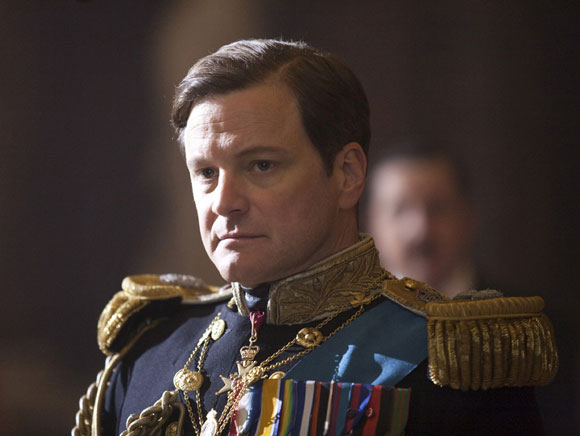
Colin Firth as King George VI in The Weinstein Co's drama, THE KING'S SPEECH.
As a child, the Duke was raised mostly by nannies, had stomach problems and was forced against his left-handedness to write with his right. So shadowed by his father’s authoritarian oratory, “Bertie,” as his family calls him, could not complete a sentence without a stammer.
“It cured Demosthenes,” says his physician while instructing the Duke to attempt speaking with a mouthful of marbles. Retorts Elizabeth Bowes-Lyon (Helena Bonham Carter), Duchess of York, “That was in ancient Greece. Has it worked since?” As you can imagine, the session ends abruptly. Thus, at the recommendation of the President of the Society for Speech Therapists*, through the fog she travels by car to commission the aid of Lionel Logue (Geoffrey Rush). He has no idea he’s in the presence of Her Royal Highness.
Logue accepts the job on the condition that they work within the privacy of his office. His method, much to the Duke’s dismay, attempts to get to the emotional root of the speech impediment. Logue taps into Bertie’s inner orator by eliminating outside obstacles, using various physical and vocal techniques (including sounding off expletives to avoid locking up, a technique which yields some of the more entertaining interjections) and playing music through headphones while the Duke recites lines from Hamlet .
“This family’s been reduced to those lowest, basest of all creatures. We’ve become actors,” says King George V (Michael Gambon) of the manner in which radio has transformed the role and presence of royalty and heads of state. The possibility of another war is looming and, following George V’s death, King Edward VIII (Guy Pearce) abdicates the throne in 1936 out of controversy, leaving his stuttering brother to take up the throne and, consequently, the responsibility for addressing subjects of the British Empire (later the Commonwealth).
Including the principals, there’s a sizable cast of well-known British actors commanding the stage on which this story is set. Derek Jacobi plays Cosmo Lang, Archbishop of Canterbury, an ambitious man who ascended to his previous title, Archbishop of York, in the 18 years since his ordination. Timothy Spall seems to have quite a bit of fun playing Winston Churchill, taking the “Bulldog” nickname to heart. British television actress Eve Best bears a startling resemblance to Wallis Simpson, the twice-divorced American for whom Edward left his station to marry.
Since his establishment as a British institution by way of the role of Mr. Darcy in the BBC miniseries adaptation of Jane Austen’s Pride and Prejudice , Mr. Firth has shown considerable growth as an actor. Last year’s A Single Man , its narrative muddled by director Tom Ford’s over-indulgence, demonstrated the range of emotion Mr. Firth could carefully contain in an understated performance. Here, he is tasked with the complication of grabbing an audience by playing an ineffectual figure, wracked with stagefright. Much of this is achieved by bouncing off Geoffrey Rush who, as Logue, effortlessly shifts between failed stage actor and over-confident, yet endearing, speech therapist.
One of the most amusing scenes, demonstrating Mr. Rush’s knack for subtlety, involves Lionel’s wife, Myrtle Logue’s early return home when the Duke and Duchess of York are still present. Logue locks himself in another room with Bertie and insists, “I need to wait for the right moment.” Head shaking slightly, his voice lowers to a whisper. Mr. Rush doesn’t over-emote. He plays the scene nervously quiet. Sensing the irony, the Duke says, “Logue, you’re being a coward.” With a tone that any married man knows all too well, Logue admits, “You’re damned right.” Some moments later, Myrtle asks if they will stay for dinner. When the Duchess explains they have a previous engagement, she’s amusingly referring to the Duke’s coronation ceremony at Westminster Abbey.
Danny Cohen’s cinematography makes considerable use of available light. Scenes in large, expansive royal quarters possess the same soft, diffuse light that complemented cinematographer Miroslav Ondricek’s shots in Milos Forman’s Amadeus . Formal compositions, using depth perspective to heighten the tension and anxiety felt by our protagonist, are used to superb result. Listening to the King’s 1939 radio address declaring a state of war with Germany after the Nazi invasion of Poland, one panning shot ends on the stark, blue-eyed face of a young soldier. The shot’s color, contrast and grain give it a striking, photojournalistic quality.
Alexandre Desplat’s use of strings reflects the state of King George’s self-confidence, at times trembling and withering and then, finding his voice, legato strings accompanied by soft piano melodies—assured yet with a stately reserve. Mr. Desplat has been around some time, scoring French television and film since 1985, but his knack for hanging American audiences on the edges of our seats by a single, oscillating note, began with Jonathan Glazer’s 2004 film, Birth . The score and superlative sound mix, meshing dialogue and music in a manner far from resembling razor blades being thrown at your ears, will go underappreciated this awards season due to the “bigger is better” rule that tends to favor that which is beaten to death, preferably loudly— 127 Hours and TRON: Legacy immediately come to mind.
Few films this year have had as well-rounded a mix of acting, direction, sound and picture, but The King’s Speech is in every respect a beautiful film, beautifully played by its principal and supporting cast, and, with seven nominations by the Hollywood Foreign Press Association in its favor, it may very well command the lion’s share of awards at the Globes and Oscars® in 2011.
* This is factually incorrect, as the Society was not founded until 1935. Logue was a co-founder.

Dolby and the double-D symbol are registered trademarks of Dolby Laboratories.

The Essential Films

THE KING'S SPEECH (2010)
Film of the day #95.
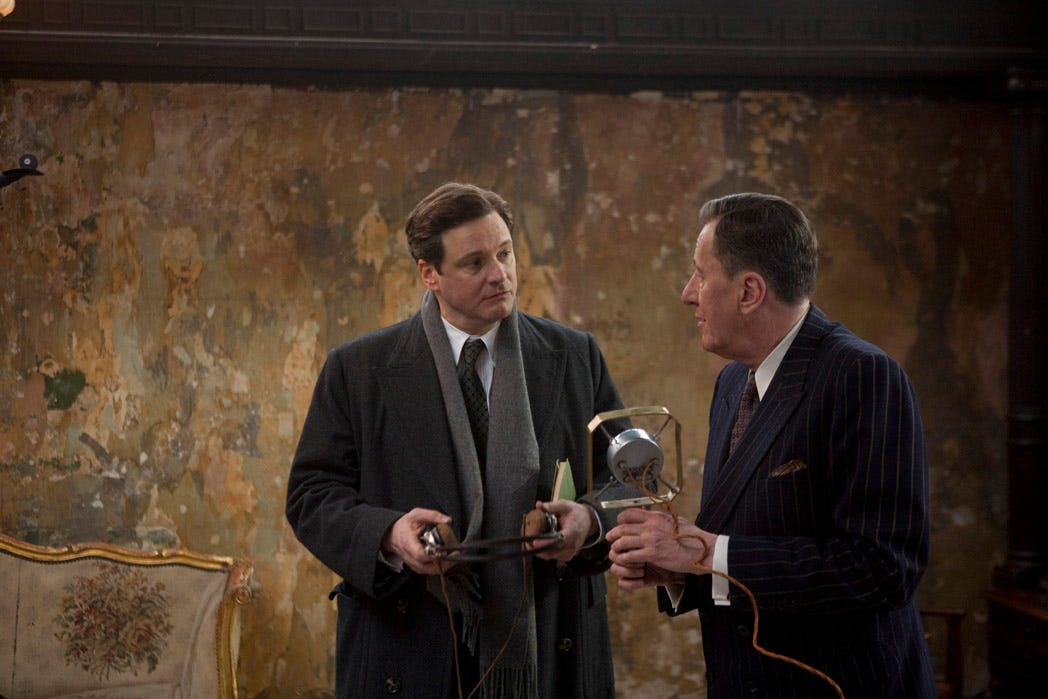
THE KING’S SPEECH 2010 • Tom Hooper Screenplay: David Seidler Producer: Iain Canning, Emile Sherman, Gareth Unwin Cast: Colin Firth, Geoffrey Rush, Helena Bonham Carter, Guy Pearce, Timothy Spall, Derek Jacobi, Jennifer Ehle, Michael Gambon, Claire Bloom Cinematography: Danny Cohen Music: Alexandre Desplat Paramount Pictures
There may be dark days ahead, and war can no longer be confined to the battlefield, but we can only do the right as we see the right, and reverently commit our cause to God. If one and all we keep resolutely faithful to it, then, with God's help, we shall prevail.
The King’s Speech is the very definition of Oscar bait. A film that seemed to be engineered specifically to clean up at Awards Season. Quality British actors, in a period piece that’s meant to inspire and not depress the viewer. Perfect. Cynicism aside, this is actually a pretty good film, regardless of baity-ness.
Everything in this film worked like a well-oiled machine, from the exceptional casting to the precise direction, outstanding writing, captivating music, and stunning cinematography. It was a feel-good movie, but not a cloyingly sentimental one, delving into the struggles of its characters in a heartfelt and sincere manner.
At the heart of The King's Speech is the story of King George VI, portrayed impeccably by Colin Firth. His journey as a man afflicted with a debilitating stammer and the weight of a nation's expectations on his shoulders is both compelling and believable. Firth's portrayal is nothing short of perfection; he not only masters the stutter, but he also infuses the character with kindness, courage, and vulnerability, creating an unforgettable George.
The film beautifully contrasts King George VI with his brother, Edward VIII, played brilliantly by Guy Pearce. The clash between duty and selfishness, and the struggle between personal happiness and national responsibilities, provide a thought-provoking backdrop. Edward is depicted as a spoiled and selfish prick, highlighting the stark contrast between the two brothers and the choices they make.
One cannot overlook the remarkable supporting cast, with Helena Bonham Carter as Queen Elizabeth and Geoffrey Rush as Lionel Logue, George's speech therapist. Their performances complement Firth's portrayal flawlessly, adding depth and dimension to the film's core relationship.
David Seidler's script is a shining gem in its own right. The story is laid out cleverly, engaging the audience from start to finish. The pace and rhythm of the film are carefully crafted, keeping viewers on the edge of their seats throughout. The combination of Seidler's script and Hooper's direction makes for a gripping and emotionally resonant experience.
The King's Speech was a turning point in Tom Hooper's career. While he went on to direct the immensely popular musical Les Misérables in 2012 with great success, he also helmed the disastrous film adaptation of Cats . Nevertheless, The King's Speech remains a highlight of Hooper's filmmaking journey, serving as a shining example of Oscar bait done right.
- You still stammered on the 'W'. - Well, I had to throw in a few so they knew it was me.
Notable Awards & Accomplishments • 12 Academy Award Nominations • Academy Award Winner: Best Picture • Academy Award Winner: Best Actor - Colin Firth
Streaming: Prime, Starz, DirecTV, Pluto, Plex Digital Rental/Purchase: Available at most major digital retailers Physical Media: Available on Blu-Ray and DVD.
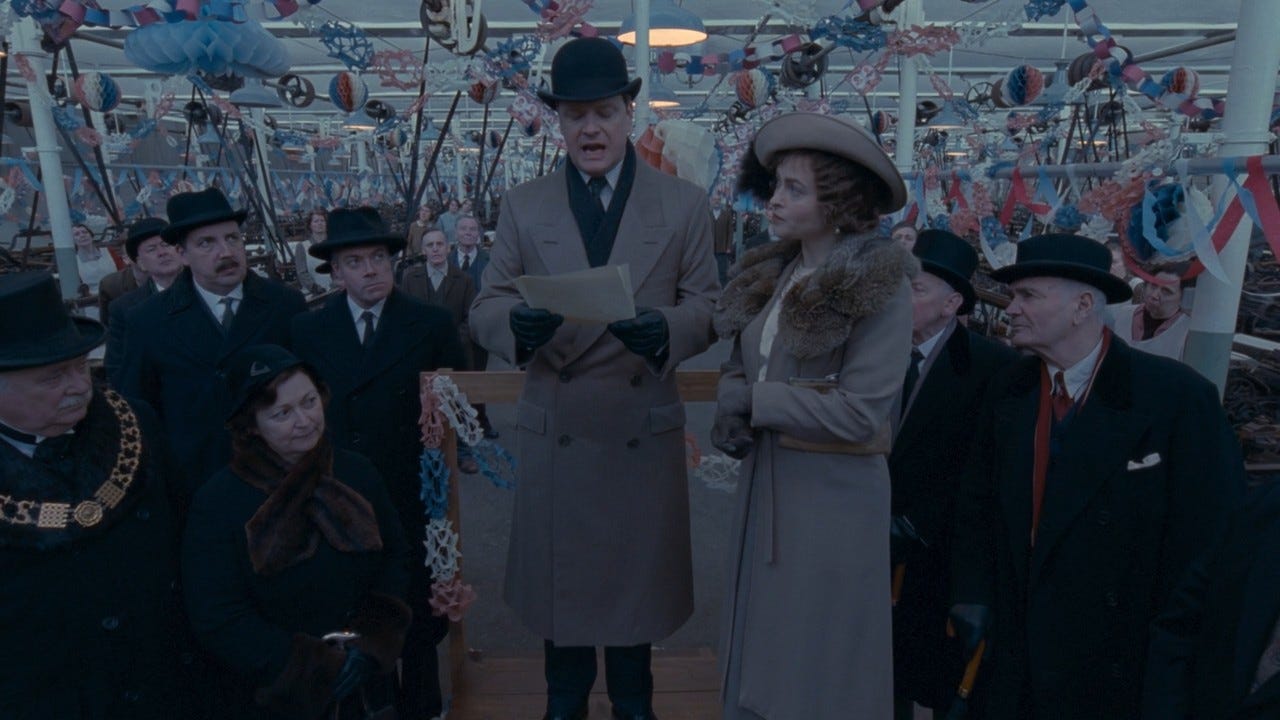
Ready for more?
- International edition
- Australia edition
- Europe edition

Oscars 2011: The Academy and the elderly genuflect to The King's Speech
Kirk Douglas's victory in the Most Noteworthy Moment category — easily trumping Melissa Leo's F-word sally — was a measure of how undramatic this year's Academy Awards were. The main event was predicted, though not precisely predictable; the success for The King's Speech covered most of the board while not going all the way across it: best film, best director, best original screenplay, best actor.
In a neurotic, not-wanting-to-jinx-it-for-them manner I had been predicting a sudden collapse for this film in all sections except Colin Firth's with a huge swing to The Social Network. That didn't happen. Instead, The King's Speech carried (almost) all before it. Even dark rumours about its historical inaccuracies , including an essay from Christopher Hitchens about its tactful rewriting of Winston Churchill's actual loyalties in the late 1930s, could not affect this film's popularity with Academy voters. They persisted in seeing it as the solidest, most plausible candidate. It had a Reaganesque, Teflon-non-stick quality.
The upset is evidently Tom Hooper winning the best director academy award – he certainly defeated some heavyweight candidate nominees. And yet if everyone is agreed that the acting was so great, then a prize for the directing is not so very surprising: it is the director's job to get those performances: this is possibly the most unshowy part of a director's job, distinct from cinematography or art direction.
The most satisfying part of the The King's Speech victory is David Seidler's Oscar for best screenplay: Oscar night is generally a display of younger or middle-youth faces looking stunned, euphoric, unable quite to believe their luck (because of course luck plays its part). Seidler's was different. He is a man in his 70s whose writing has emerged from a lived experience. The movie world now knows how he originally approached the Queen Mother decades ago and asked for Clarence House's help in writing the screenplay; she asked him to wait until she was dead and Mr Seidler decently obliged. I very much suspect that the Queen Mother had no great interest in helping out film-makers with their lèse majesté schemes and was effectively asking him to wait until both she and Mr Seidler were dead: that is, drop dead and stop making impertinent requests. Well, the author behaved impeccably and has been karmically rewarded, and I think Helena Bonham-Carter's portrayal of the then Queen Elizabeth's haughty tendencies was shrewdly judged.
There's something else here: when my mother told me my 80-something aunt had gone to the cinema, on her own, to see The King's Speech, I realised how successful it has been (in this country, anyway) in harnessing the awesome strength of the grey pound . People who haven't gone to the cinema in 10 or 20 years are going to see The King's Speech. Older people are generally ignored or patronised in the movies: so this film's mighty triumph is a modest assertion of their existence.
To balance all those toffee-nosed Brits, the Academy rewarded the all-American and quasi-American performances of Melissa Leo and Christian Bale in The Fighter (the latter technically counts as a British success, but Bale is now more part of the Hollywood global village and these thoughts are arguably parochial anyway.) I had been wanly hoping that John Hawkes might win for Winter's Bone, but like everyone else in that excellent film, he turned out to be the dignified outsider.
In a Hollywood scene in which screenplays are endlessly rewritten, tweaked and polished by dozens of sweating writers, Aaron Sorkin's victory in the best adapted screenplay is a victory for the single authorial voice. I have to keep reminding myself that Sorkin was not a contender in the "original" screenplay category – an irony, because this script was the most spectacularly original piece of work, a motormouth masterpiece. It just seemed to pour out of him. Sorkin effortlessly persuaded us to share his love for the sound of his own voice, and the love was more than justified. Sorkin dialogue provided its own ambient feel, like a musical score.
Christopher Nolan's Inception had four Oscars on the scoreboard which will have gone some way towards mollifying its passionate fans who feel that it has been slighted, rather. I myself have been agnostic about it , though I certainly think it is more interesting and daring than Avatar which hogged so many column inches last year.
Inevitably, Toy Story 3 was patted on the head with the best animation prize and also, admittedly, one for Randy Newman's song We Belong Together, and so this remarkable movie series has concluded without, in my view, a proper acknowledgement of its achievement. Well, it doesn't matter in the long run, though I suspect that a similar semi-snub to Harry Potter and the Deathly Hallows Part 2 next year is going to occasion a few ruffled feathers among those who feel that the Potter franchise has been the commercial success of the decade: still powering along when Lord of the Rings and the Star Wars prequels are distant memories.
Natalie Portman's best actress prize for Black Swan is perhaps a reward for miraculously perfect casting: her own, faintly annoying "white swan" characteristics as a performer have been visible in other films for some time, but this picture got exactly the right notes of self-doubt and sexual anxiety out of her. Perhaps comparable to Sissy Spacek in Carrie, she carried the film with a satisfyingly diva-ish craziness.
But it is Colin Firth's year, and his performance was hugely watchable. I have to raise a tiny caveat, though. Again and again, I have heard people say how "moving" it was, and how they were choking back the tears. This baffles me — and I am an inveterate sniffler and blubberer at sad films. I didn't find it in the least sad; I just enjoyed the artifice and luxurious Englishness of it all. There is some cheek at presenting an English monarch as the underdog, yet even this audacity was part of its charm. King Colin may find, as Edward Fox and Michael Kitchen have done before him, that a big "royal" performance tends to colour how you are perceived for the rest of your career. To shake it off, he may, in the next few years, need to play Sid Vicious, General Pinochet and the Nurse in an all-male production of Romeo and Juliet. But for now, he can relax and enjoy being King Colin.
- Oscars 2011
- Colin Firth
- Natalie Portman
- Kirk Douglas
- Melissa Leo
- Aaron Sorkin
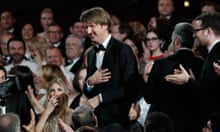
Oscars 2011: We have the success, but what now for British film?

Oscars 2011: 10 ways to improve the ceremony

Oscars 2011: Tom Bidwell's diary
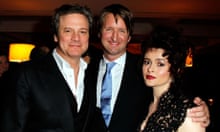
Oscars 2011: My week with the stars
Oscars 2011: film critics' reactions - video.
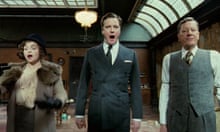
Curses! Colin Firth against PG-13 cut of King's Speech
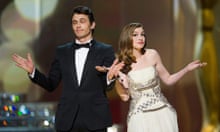
No prizes to Oscars hosts James Franco and Anne Hathaway

Oscars 2011: All the fun of the Vanity Fair party – in pictures
Comments (…), most viewed.
The King's Speech (2010)
Full cast & crew.

Directed by
Writing credits , cast (in credits order) verified as complete , produced by , music by , cinematography by , editing by , casting by , production design by , art direction by , set decoration by , costume design by , makeup department , production management , second unit director or assistant director , art department , sound department , special effects by , visual effects by , camera and electrical department , casting department , costume and wardrobe department , editorial department , location management , music department , script and continuity department , transportation department , additional crew , thanks .
Release Dates | Official Sites | Company Credits | Filming & Production | Technical Specs
Contribute to This Page
- Full Cast and Crew
- Release Dates
- Official Sites
- Company Credits
- Filming & Production
- Technical Specs
- Plot Summary
- Plot Keywords
- Parents Guide
Did You Know?
- Crazy Credits
- Alternate Versions
- Connections
- Soundtracks
Photo & Video
- Photo Gallery
- Trailers and Videos
- User Reviews
- User Ratings
- External Reviews
- Metacritic Reviews
Related Items
- External Sites
Related lists from IMDb users

Recently Viewed
Letterboxd — Your life in film
Forgotten username or password ?
- Start a new list…
- Add all films to a list…
- Add all films to watchlist
Add to your films…
Press Tab to complete, Enter to create
A moderator has locked this field.
Add to lists

Where to watch
The king's speech.
Directed by Tom Hooper
Find your voice.
The King's Speech tells the story of the man who became King George VI, the father of Queen Elizabeth II. After his brother abdicates, George ('Bertie') reluctantly assumes the throne. Plagued by a dreaded stutter and considered unfit to be king, Bertie engages the help of an unorthodox speech therapist named Lionel Logue. Through a set of unexpected techniques, and as a result of an unlikely friendship, Bertie is able to find his voice and boldly lead the country into war.
Colin Firth Geoffrey Rush Helena Bonham Carter Guy Pearce Timothy Spall Michael Gambon Jennifer Ehle Derek Jacobi Freya Wilson Ramona Marquez Richard Dixon Robert Portal Eve Best Paul Trussell Adrian Scarborough Andrew Havill Charles Armstrong Roger Hammond Calum Gittins Dominic Applewhite Ben Wimsett David Bamber Jake Hathaway Patrick Ryecart Teresa Gallagher Simon Chandler Claire Bloom Orlando Wells Tim Downie Show All… Dick Ward John Albasiny Danny Emes Anthony Andrews John Warnaby Roger Parrott Dean Ambridge Julianne Buescher James Currie Graham Curry Tony Earnshaw Sean Talo
Director Director
Producers producers.
Iain Canning Simon Egan Gareth Unwin Emile Sherman Erica Bensly
Writer Writer
David Seidler
Casting Casting
Editor editor.
Tariq Anwar
Cinematography Cinematography
Danny Cohen
Assistant Directors Asst. Directors
Chris Stoaling Martin Harrison
Executive Producers Exec. Producers
Harvey Weinstein Paul Brett Geoffrey Rush Tim Smith Bob Weinstein Mark Foligno Deepak Sikka
Lighting Lighting
Paul McGeachan
Camera Operators Camera Operators
Zac Nicholson Danny Cohen
Additional Photography Add. Photography
Martin Kenzie
Production Design Production Design
Eve Stewart
Art Direction Art Direction
Leon McCarthy David Hindle
Set Decoration Set Decoration
Special effects special effects.
James Davis III
Visual Effects Visual Effects
Thomas M. Horton Derek Bird Danny S. Kim Melinka Thompson-Godoy
Choreography Choreography
Scarlett Mackmin
Composer Composer
Alexandre Desplat
Sound Sound
Paul Hamblin Lee Walpole John Midgley Peter Burgis Martin Jensen Catherine Hodgson Gerard McCann Andie Derrick
Costume Design Costume Design
Jenny Beavan
Makeup Makeup
Christine Whitney Paul Gooch
Hairstyling Hairstyling
Alex Rouse Frances Hannon Nana Fischer Carmel Jackson
The Weinstein Company UK Film Council Momentum Pictures Aegis Film Fund Molinare Investment FilmNation Entertainment See-Saw Films Bedlam Productions
Releases by Date
06 sep 2010, 10 sep 2010, 21 oct 2010, 05 dec 2010, 12 dec 2010, 16 dec 2010, 29 jan 2011, 05 feb 2011, 16 feb 2011, 28 feb 2011, 25 apr 2011.
- Theatrical limited
26 Nov 2010
22 dec 2010, 23 dec 2010, 25 dec 2010, 26 dec 2010, 07 jan 2011, 21 jan 2011, 27 jan 2011, 28 jan 2011, 02 feb 2011, 03 feb 2011, 04 feb 2011, 10 feb 2011, 11 feb 2011, 17 feb 2011, 18 feb 2011, 23 feb 2011, 24 feb 2011, 25 feb 2011, 26 feb 2011, 03 mar 2011, 04 mar 2011, 10 mar 2011, 17 mar 2011, 01 apr 2011, 11 may 2011, 24 feb 2012, 28 apr 2013, 02 sep 2011, 15 sep 2011, releases by country.
- Theatrical M
- Premiere Bahamas International Film Festival
- Theatrical EA
Bolivarian Republic of Venezuela
Bosnia and herzegovina.
- Theatrical 12
- Premiere Toronto International Film Festival
- Premiere Beijing International Film Festival
- Theatrical S
- Theatrical U
- Premiere Berlin International Film Festival
- Theatrical 0
- Theatrical IIB
- Theatrical 12A
- Theatrical G
- Theatrical N-13
Netherlands
- Premiere International Film Festival Rotterdam
- Theatrical AL
- Physical AL DVD, Blu ray
- Theatrical AL RTL 4
New Zealand
Philippines.
- Theatrical M/12
Russian Federation
- Theatrical 16+
- Premiere Belgrade Film Festival
South Korea
- Premiere Barcelona
- Theatrical APTA
- Premiere Göteborg International Film Festival
- Theatrical Btl
Switzerland
- Premiere BFI London Film Festival
- Premiere Telluride Film Festival
- Theatrical R
- Theatrical Re-release
United Arab Emirates
- Premiere Dubai International Film Festival
118 mins More at IMDb TMDb Report this page
Popular reviews
Review by Evan ★★★ 22
Best Picture...? Seriously...?
Review by sophie ★★★½ 15
when i told my dad this beat the social network for best picture he said that "this was the better film". in other unrelated news, i am now seeking to be legally emancipated from my father.
Review by Will Sloan ★
Without an ounce of hyperbole, I am telling you that Tom Hooper is one of the very worst directors to ever attain "professional" status. This is a nightmarish visual experience. The wanton violations of the 180-degree rule. The bizarre compositions in which characters are pointlessly consigned the extreme right or left of the frame with acres of dead space next to them. The way his camera will arbitrarily shift into Terry Gilliam-vision. His inability to consider what the impact of a space should be, and how to correctly communicate that idea visually. People rightly give Kevin Smith a hard time for his visual illiteracy, but Tom Hooper is so much worse.
What's funny about royalist kitsch like this and The…
Review by dani✨ ★★★ 1
colin firth invented the chubby bunny challenge
Review by 👽hayley👽 ★★★ 1
well ill tell u what it's no The Social Network (2010) dir. David Fincher
Review by Sammie ★★★★ 3
Hitler bad, Colin Firth good.
Review by kayla ౨ৎ ★★★ 2
colin firth yelling random curse words is considered a form of therapy
Review by issy 🥝 ★★★★ 8
I'm always surprised when I re-realise that Colin Firth was never a part of the Harry Potter films, he should've been in them, I'd take anything really. He could be the guy who wears the green CGI outfit in place of that huge spider Aragog in the forbidden forest and it'd be good enough for me just give me Colin Firth's name in the credits of at least one (1) Harry Potter film or give me death
Review by 🇵🇱 Steve G 🇵🇸 ★★★★ 16
The Box Office Bashing Season: 2003 to 2014
As I've wittered on about at length numerous times before, I'm no fan of the Oscars.
However, I do think sometimes they are used as a rather lazy brickbat to beat certain films with. It seems that you can't make certain films with certain directors and certain casts backed by certain studios or producers without them immediately being labelled as 'Oscar bait'. It's a cynical and sad world we live in as film fans that there are films out there that have been made with the pure objective of winning Oscars, obviously.
But then certain films quite possibly end up as collateral damage. The King's Speech, for instance, was never going to…
Review by Edgar Cochran ✝️ ★★★★ 12
Please spell me out the "clichéd" and "formulaic" elements in The King's Speech, because even if it is a doubtful Academy Awards conqueror, Tom Hooper built a proper historical account about the struggle of a man to become a symbol of national resistance in imminent war times that were about to shape the world. It has been accused of being "predictable" as well. Maybe that's because the story was based on true events? The art of cinema retelling true stories resides in the ability to properly, yet respectfully carry on the task of dramatization, one of the main successes of The King's Speech .
I applaud the performances and the execution. Dialogue handling was impeccable, and the cinematography was worthy of…
Review by thiccthanos idk 9
"You are going to go through life thinking movie goers don't like you cause your're oscar bait, and I want you to know from the bottom of my heart, that wont be true. It'll be because you beat the social network for best picture."
Review by hannah ★★★★★ 1
controversial opinion time: this masterpiece deserved every academy award it won
Similar Films

Mentioned by
Select your preferred poster
Upgrade to remove ads.
Letterboxd is an independent service created by a small team, and we rely mostly on the support of our members to maintain our site and apps. Please consider upgrading to a Pro account —for less than a couple bucks a month, you’ll get cool additional features like all-time and annual stats pages ( example ), the ability to select (and filter by) your favorite streaming services, and no ads!
bran's filmstudies
Film studies 11B
Friday 11 September 2015
King's speech cinematography.

No comments:
Post a comment.

The King's Speech (DP : Danny Cohen)

Just updated your iPhone? You'll find new features for Podcasts, News, Books, and TV, as well as important security improvements and fresh wallpapers. Find out what's new and changed on your iPhone with the iOS 17.5 update.
Be the First to Comment
Share your thoughts, news : nab 2010 - panasonic camcorder ag-3da1 & ag-af100, news : the role of a gaffer, howto : build your own diy supermacro lens, how to : shoot day for night, news : a twisted experiment in ovine geometry, news : new motion cheap motion timelapse dolly, news : amazing commercial with surprise ending, news : lacking inspiration get a light boner, news : nab 2010 - redrock micro iphone remote insanity, news : 8mm film burning & melting - art at its best, animal kingdom (dp : adam arkapaw), how to : how the best amateur youtube stars build, light, and shoot a green screen for cheap, news : lego cable camera rig, shot on 7d : ruins of failaka island, kuwait, music video : jesse rose - non-stop, shooting street cats in kuwait : or why going digital was the right choice, news : "tree of life" trailer = take that, summer blockbuster (dp: emmanuel lubezki), news : what's not to like about this red mx sensor, how to : do a dolly zoom in-camera effect shot, sam raim.
- All Features
How To : Add Motion to Timelapse Videos with Panolapse
How to : get muscles for the movie thor, how to : fig rig & compact lighting packages, how to : the william f. whites toolbelt, news : 'nirvana' short film, news : new android app for cinematography tracks sunlight, news : the perfect stocking stuffer - cinestar 3 axis gimbal, news : my brother's keeper, music video : everyday's a holiday, battlestations : doritos crash the superbowl entry from 2009, news : can bad lawyer commercials turn out any good, news : oscar cinematography compilations, how to : kessler dolly and basic controller tutorial, news : video of storm and a new day, news : create a video for legendary rock band senser, and win magic bullet looks, news : magic box.
- All Hot Posts
Advertisement
Supported by
A Nigerian Filmmaker Hungry to Elevate Nollywood’s Thrills
The director Daniel Oriahi is capturing the audience’s attention with his latest film, “The Weekend,” which will premiere at the Tribeca Festival.
- Share full article

By Nicolas Rapold
The bustling Nigerian film industry known as Nollywood certainly keeps directors busy: In the past decade, Daniel Oriahi has made over 25 movies. But the filmmaker hit a new career breakthrough when the Tribeca Festival accepted his latest, “The Weekend,” a simmering thriller about in-laws with nightmarish appetites.
The selection brings the 41-year-old director welcome recognition after years of churning out movies. “You’re like, ‘Where does it end?’” Oriahi said of the relentless pace. “The Weekend,” premiering Sunday, is intended as a polished, genre-bending departure from Nollywood quickies, and it screens in the mature-themed Midnight section of the festival, which runs Wednesday through June 16.
Oriahi’s debut feature in 2013 was a psychological thriller called “Misfit,” and he scored a breakthrough hit in 2015 with the action comedy “Taxi Driver: Oko Ashewo,” set in the Nigerian capital, Lagos.
Oriahi’s love of movies dates back to his childhood in the small town of Ewu when he drew comics of films like “Die Hard with a Vengeance” and watched Steven Spielberg pictures on cable television. After attending film school in Nigeria, he founded his own production company, meeting demand with supply.
In “The Weekend,” normal tensions escalate to grisly demands as Nikya (Uzoamaka Aniunoh) and her fiancé, Luke (Bucci Franklin), grapple with his cheery but profoundly unsettling family. In a video interview, Oriahi spoke about keeping the audience on tenterhooks, the challenges of Nollywood and his filmmaking heroes. The conversation has been edited and condensed.
What attracted you to this story?
I haven’t had the opportunity to make necessarily big-budget films, and in the Nigerian landscape, “The Weekend” is seen as a high-budget film. Such films are rare to come by. But I pride myself as a filmmaker who wants to make films that are seen, so I’ve made a lot of stuff for local streamers. Over time, I have discovered I am drawn to narratives that have dysfunctional family dynamics. I come from a country where it’s very dysfunctional, to be honest.
The whole country?
Yeah! We have this colonial past, you know, and that has shaped the way the country is. But besides the family dysfunction, I am drawn to films that deal with trauma. When I got the script, I liked that you had characters that wanted something but weren’t being honest about why. And it can get messy when you find yourself in a relationship with somebody who has family dynamics like in the film.
I grew up watching Roman Polanski films, like “Rosemary’s Baby.” “Hereditary,” too, is an amazing film. I recently saw “The Wailing.” It morphs into so many things: It starts like a thriller, then it’s looking like a zombie movie. I’ve never really seen it done in Nigeria with a Nigerian approach. I could sense that the world is eager to watch films that are not branded as one genre. I want to make films like that, that have many layers and that people can watch and relate to from different perspectives.
You bring a lot of experience from directing so many movies. You probably saw the news about Roger Corman ——
Yeah! That really hit me because Corman was one of those filmmakers that I always used to console myself, because this is the king of B movies, and so many great filmmakers had their first breakthrough from this guy. So I always used to tell myself that the whole Nollywood space is like Roger Corman : Make a lot of cheap, quick films to survive, but you are finding your voice and your style as you go along. Film school is great. I went to a film school. I taught at a film school. But some things you learn on the job.
Just even the idea of working in Nigeria — it’s very chaotic. You have to deal with power setbacks, with shortages in gas and petroleum. You have to deal with external elements that will affect how this film is going to come out, and how do you maintain your voice? Even “The Weekend,” I think, we shot in less than 18 days. Because of the way we make films in Nigeria, people are jumping from one set to the next. You have to have a laser focus.
“The Weekend” works off a slow-burn before things get wilder. How do you maintain the tension?
So the acting orientation in the Nollywood space is very dramatic — it comes from television, so you have to be dramatic, melodramatic, use your body. I told everybody: restraint. Just hold it back. And when they are having a conversation with another person, they should be aware that they are holding onto some information. So don’t give it away by body mannerisms or tone of speech. That influenced my casting: the actress who plays the lead has an unassuming face where you can’t tell what she’s thinking.
The family’s workings also suggest a sinister patriarchal side to the society.
Yeah, I’m thinking about that now, because when I came back to Nigeria recently, I was noticing very clearly how it’s so male dominated. I was uncomfortable with the kind of interactions that happen. And in “The Weekend,” in the dinner scene, you have a character making condescending comments about women. I remember when we were cutting it and getting different shots of people responding, the editor took a man’s response to the comments as the next shot. And I was like, no, it shouldn’t be a guy, it should be the women reacting. Let’s make it a long shot and see how each woman reacts to it in that space.
You’ve mentioned some international influences, but could you share some Nigerian filmmakers who you like?
Oh yeah! The first person that comes to my mind is Michael Omonua . He’s part of a collective of filmmakers that call themselves the Surreal16. C.J. Obasi made “Mami Wata,” which was the rare Nigerian film to be at Sundance and won the cinematography award last year. Abba Makama really strikes me as an interesting filmmaker, and Ema Edosio is amazing. Jade Osiberu has a deal with Amazon Prime.
I think I’m gravitating to filmmakers who are not boxing themselves in. We’re making films with our own distinct voices and they are being accepted internationally. Because that’s always been the desire, to make a film that can travel.
Explore More in TV and Movies
Not sure what to watch next we can help..
Leslye Headland’s new “Star Wars” show, The Acolyte,” is a dream come true, but she knows it carries enormous expectations .
Once relegated to supporting roles, the comedian Michelle Buteau is a star of the film “Babes” and is moving to a bigger stage, Radio City Music Hall, for her new special.
American audiences used to balk at subtitles. But recent hits like “Shogun” and “Everything Everywhere All at Once” show how much that has changed .
If you are overwhelmed by the endless options, don’t despair — we put together the best offerings on Netflix , Max , Disney+ , Amazon Prime and Hulu to make choosing your next binge a little easier.
Sign up for our Watching newsletter to get recommendations on the best films and TV shows to stream and watch, delivered to your inbox.

IMAGES
VIDEO
COMMENTS
27 February 2011 No other industry composes time period dramas like the British and The King's Speech is no exception. In many ways, the film is quintessential; the stunning costumes, moving score, brilliant performances, and majestic sets exemplify the high standard of a quality cinematic contribution. However, cinematography in The King's Speech is far from typical,…
Danny Cohen, BSC, shoots most of his commercial work on digital cameras. But The King's Speech cinematographer considers it fortunate that all of his features to date, including the Emmy Award-winning HBO series John Adams-also directed by Tom Hooper-were shot on film.We caught up with Cohen, nominated for an Academy, BAFTA and ASC award for his principal photography, to find out how under ...
This week, cinematographer Danny Cohen writes about creating tension in "The King's Speech" and the tricky lighting issues of filming in a recording booth. In the climax of "The King's ...
Critics have widely praised the editing, cinematography, directing, and acting. The movie was able to express the main characters' inner life by the clever use of lighting and other cinematic techniques. Colin Firth won an Oscar for his portrayal of George IV/ The King's Speech was produced by a British company, and it was shot mainly in London.
By Matt Hurwitz. From his previous period film work ("John Adams") with director Tom Hooper, cinematographer Danny Cohen knew what would be called for in "The King's Speech" to keep the ...
Naomi Pfefferman. February 24, 2011. In a memorable scene from "The King's Speech," the future George VI (Colin Firth), a.k.a. Bertie, spews every expletive imaginable as a technique to ...
A big part of cinematography, Cohen says, is to get the shoot done and make it believable for the audience, who are watching any period piece from the perspective of today. The majority of The King's Speech was shot on locations late in 2009, with only a few studio set sequences. Because of the time of year getting enough light for long enough ...
The King's Speech is a 2010 historical drama film directed by Tom Hooper and written by David Seidler. Colin Firth plays the future King George VI who, to cope with a stammer, sees Lionel Logue, an Australian speech and language therapist played by Geoffrey Rush.The men become friends as they work together, and after his brother abdicates the throne, the new king relies on Logue to help him ...
Cinematographer. Encino, California USA. Posted January 16, 2011. On 1/15/2011 at 6:39 PM, Richard Boddington said: I agree with both of you, beautifully shot indeed. One question though *potential spoiler* if the King spoke perfectly with the head phones on while the music played in his ears. Why didn't he just wear the headphones & listen to ...
"The King's Speech" tells the story of a man compelled to speak to the world with a stammer. It must be painful enough for one who stammers to speak to another person. To face a radio microphone and know the British Empire is listening must be terrifying. At the time of the speech mentioned in this title, a quarter of the Earth's population was in the Empire, and of course much of North ...
Colin Firth as King George VI in The Weinstein Co's drama, THE KING'S SPEECH. In April of 1924, King George VI opened the British Empire Exhibition at Wembley. The Duke of York, played beautifully by the affable Colin Firth, stammered in his delivery of the games' opening speech. ... Danny Cohen's cinematography makes considerable use of ...
Cinematography: Danny Cohen Music: Alexandre Desplat. ... The King's Speech was a turning point in Tom Hooper's career. While he went on to direct the immensely popular musical Les Misérables in 2012 with great success, he also helmed the disastrous film adaptation of Cats.
The main event was predicted, though not precisely predictable; the success for The King's Speech covered most of the board while not going all the way across it: best film, best director, best ...
Explore the inspiring journey and personal growth of King George VI through captivating cinematography in "The King's Speech."Instagram: https://www.instagra...
British film The King's Speech has been crowned best picture at the Oscars, with star Colin Firth named best actor. ... Sci-fi spectacular Inception won four awards, for cinematography, visual ...
The Kings Speech-Cinematography. In the final speech scene of 'The Kings Speech' distortion occurs with a wide angle lens. Close ups are very, very close to the camera. The distortion is uncomfortable as it feels as though it is the point of view of the the other person. It mimics invasion of personal space.
The King's Speech (2010) cast and crew credits, including actors, actresses, directors, writers and more. Menu. ... King's Emissary / Passerby (uncredited) Produced by . Paul Brett ... executive producer ... Cinematography by . Danny Cohen ... director of photography Editing by . Tariq Anwar Casting By .
Directed by Tom Hooper. Biography, Drama, History. PG-13. 1h 58m. By Manohla Dargis. Nov. 25, 2010. British films that make it to American screens these days often fall into two distinct niches ...
The King's Speech tells the story of the man who became King George VI, the father of Queen Elizabeth II. After his brother abdicates, George ('Bertie') reluctantly assumes the throne. Plagued by a dreaded stutter and considered unfit to be king, Bertie engages the help of an unorthodox speech therapist named Lionel Logue. Through a set of unexpected techniques, and as a result of an unlikely ...
The cinematography in King's Speech was well shown throughout the entire film. This one scene out of the many scenes that potrait very well cinematography is the one when Bertie finishes his final speech and walks out of the speech room and keeps walking as his workers all clap for him and he continues walking and there's a tracking shot ...
New trailer for "The King's Speech", directed by Tom Hooper (John Adams,The Damned United) and shot by Danny Cohen (John Adams,Pirate Radio). Really interesting use of framing (shortsided and headroom) and lenses. Among other things, it's refreshing to see the filmmakers choose to shoot a CU with a 24mm that's a foot below the eyeline instead of the conventional 180mm CU that feels like you're ...
The King's Speech is a 2010 British historical drama film directed by Tom Hooper, from a script by David Seidler.The film stars Colin Firth as George (both Duke of York and later king), Helena Bonham Carter as his wife Queen Elizabeth, and Geoffrey Rush as the speech therapist Lionel Logue. The film focuses on the attempts by George to overcome his stutter, a process in which Logue was ...
IN 2010, the historical drama film 'The King's Speech' was played across movie theaters. It depicted the struggle of Britain's King George VI, played by actor Colin Firth, to deliver a speech on a radio broadcast in the face of an approaching war with Germany in 1939. Due to King George VI's stuttering impediment, he was coached by a speech therapist, played by actor Geoffrey Rush.
C.J. Obasi made "Mami Wata," which was the rare Nigerian film to be at Sundance and won the cinematography award last year. Abba Makama really strikes me as an interesting filmmaker, and Ema ...